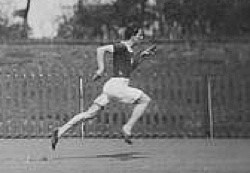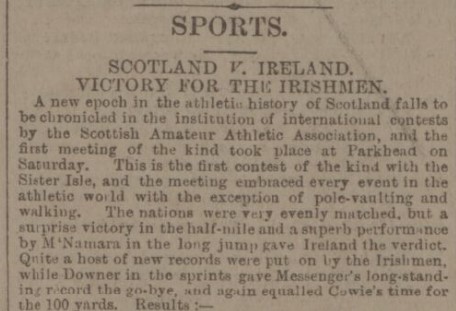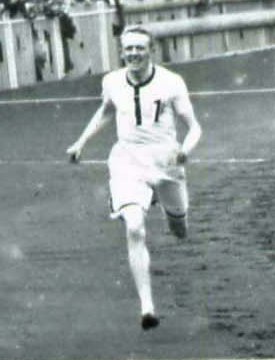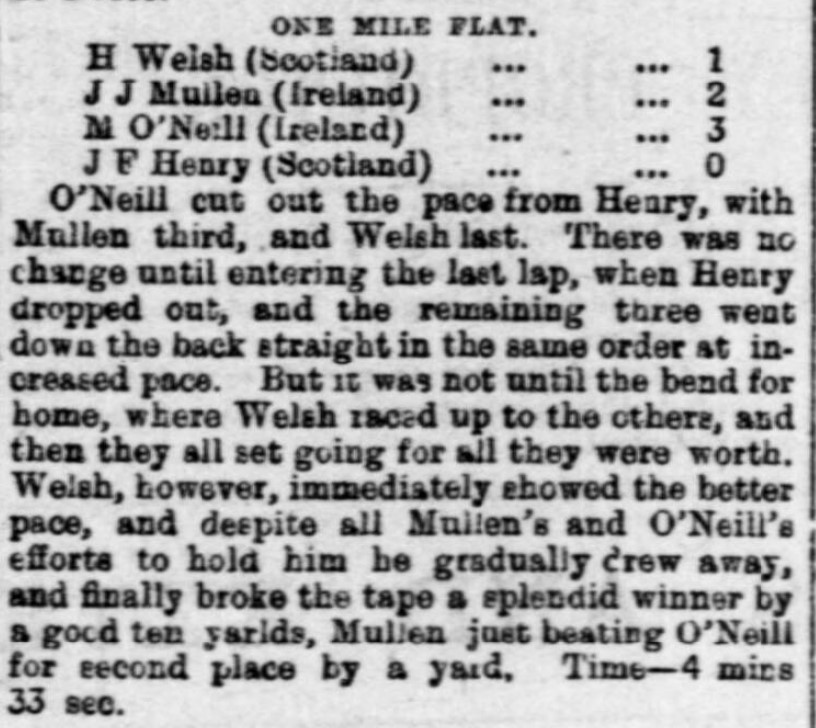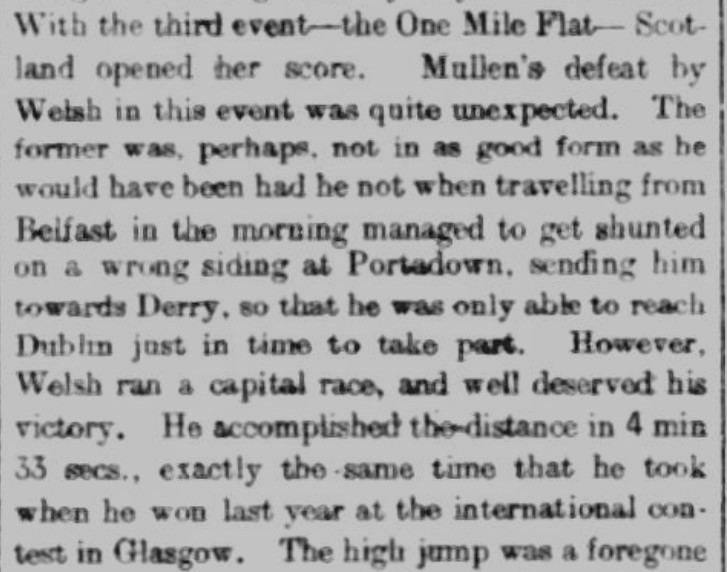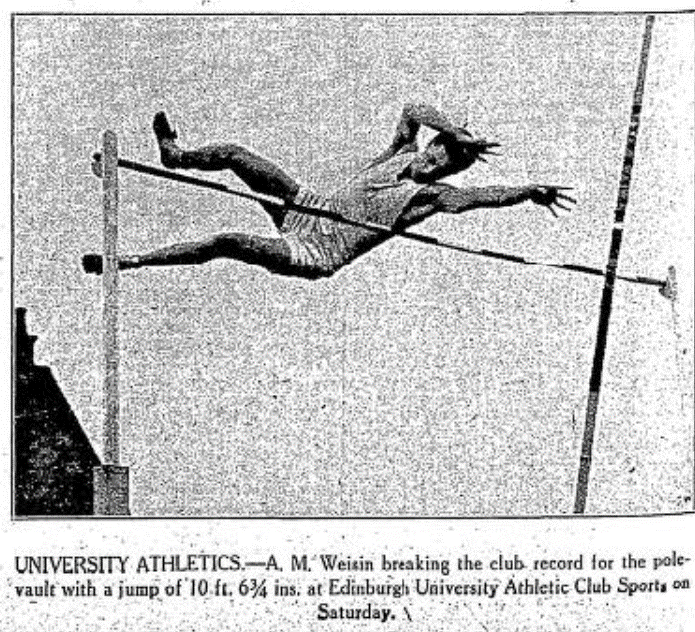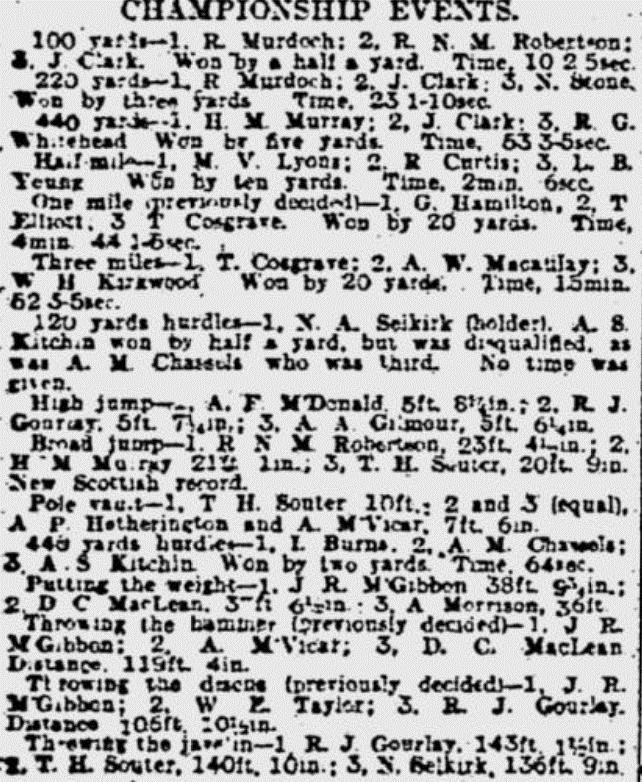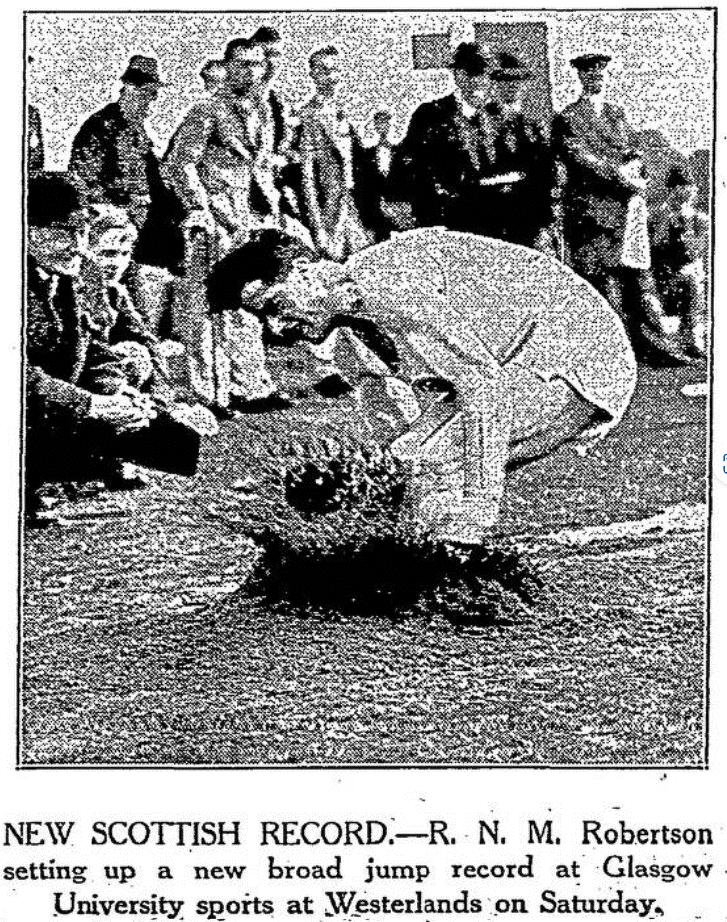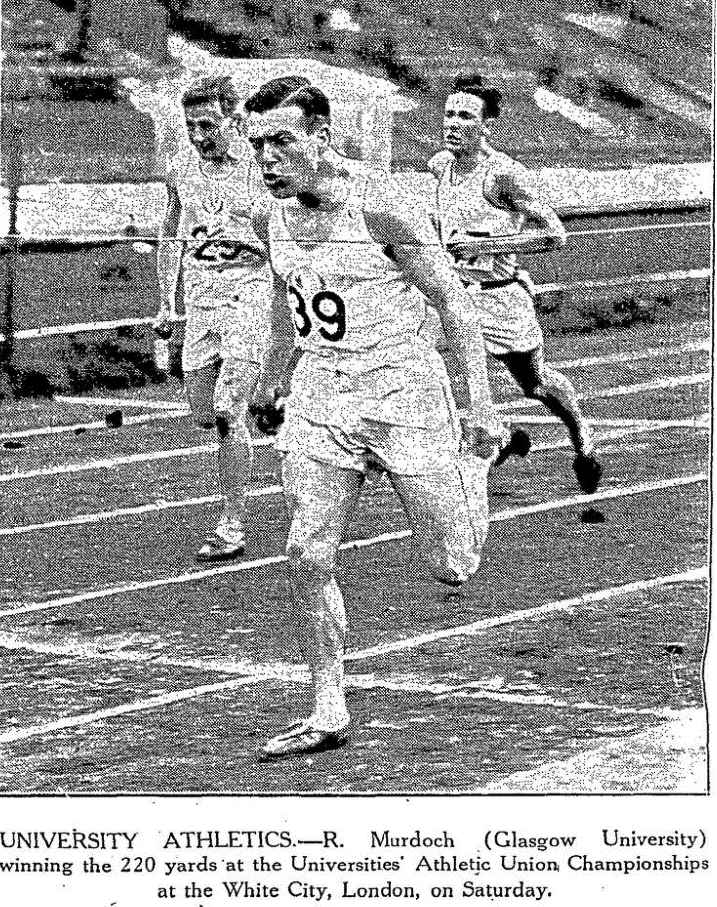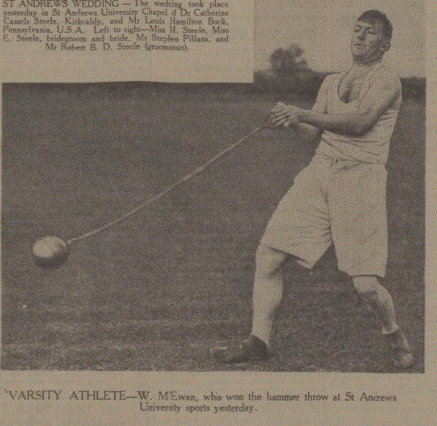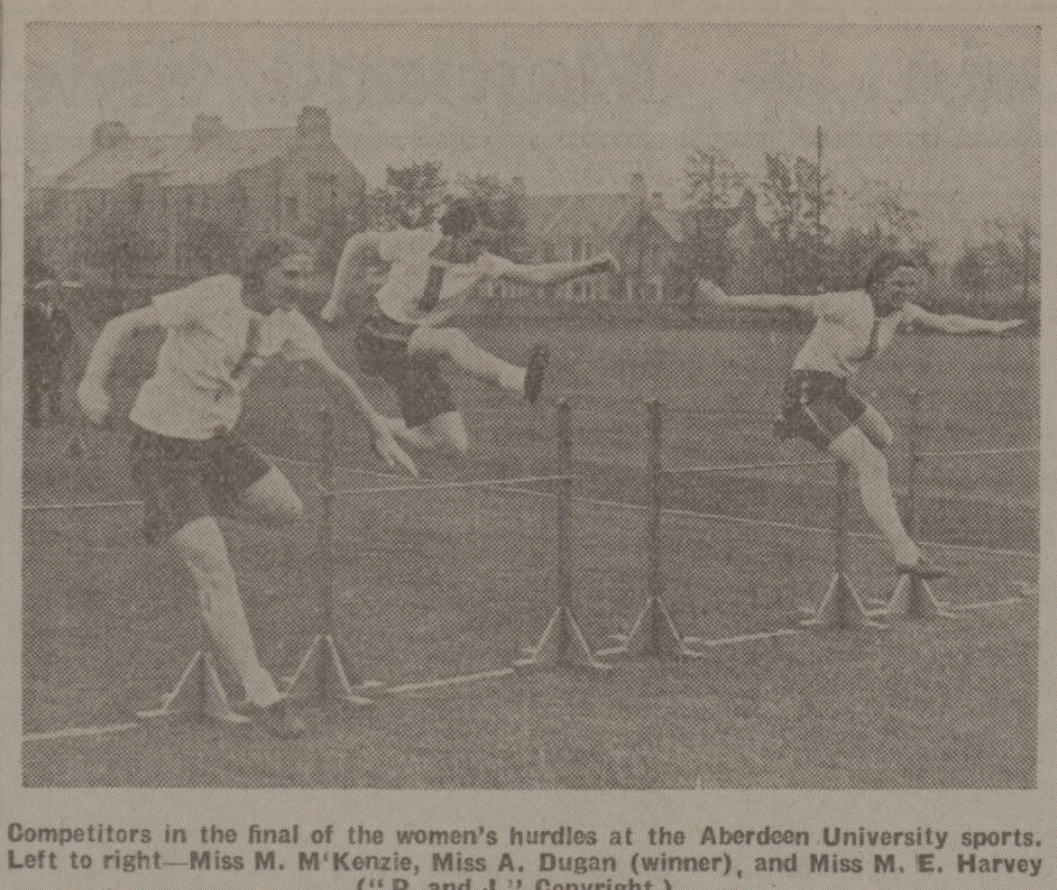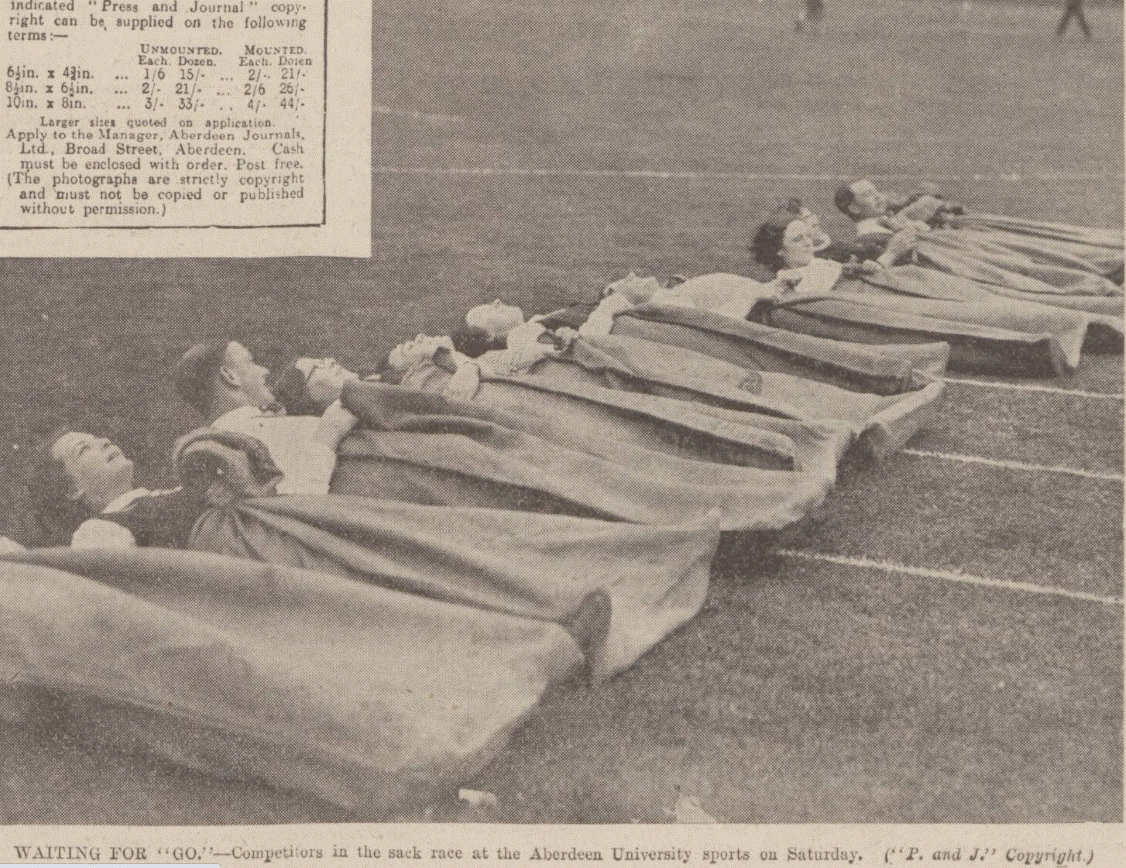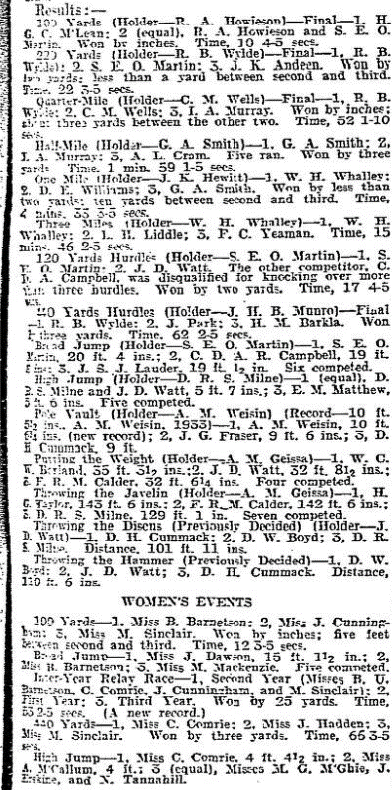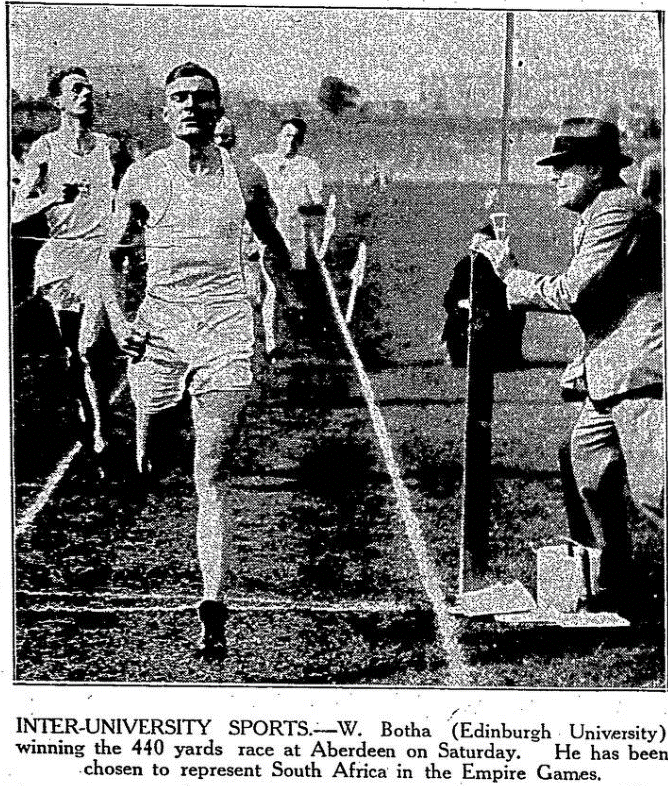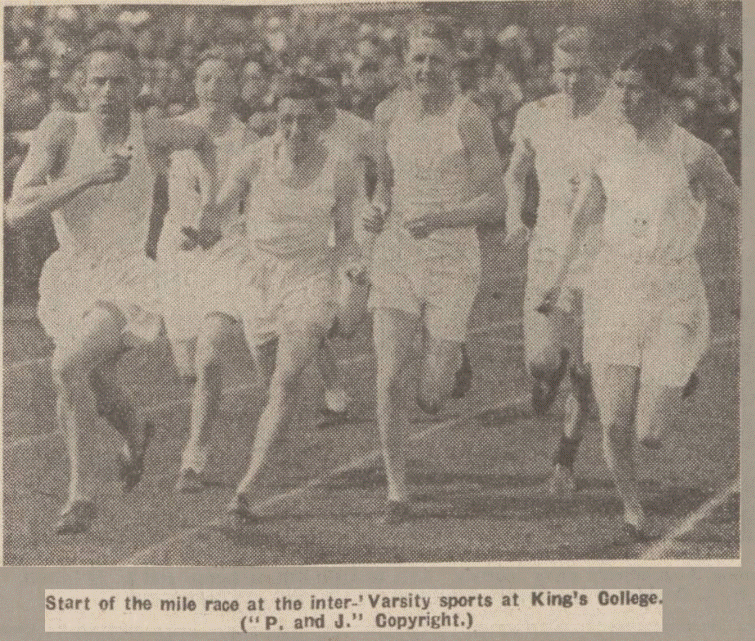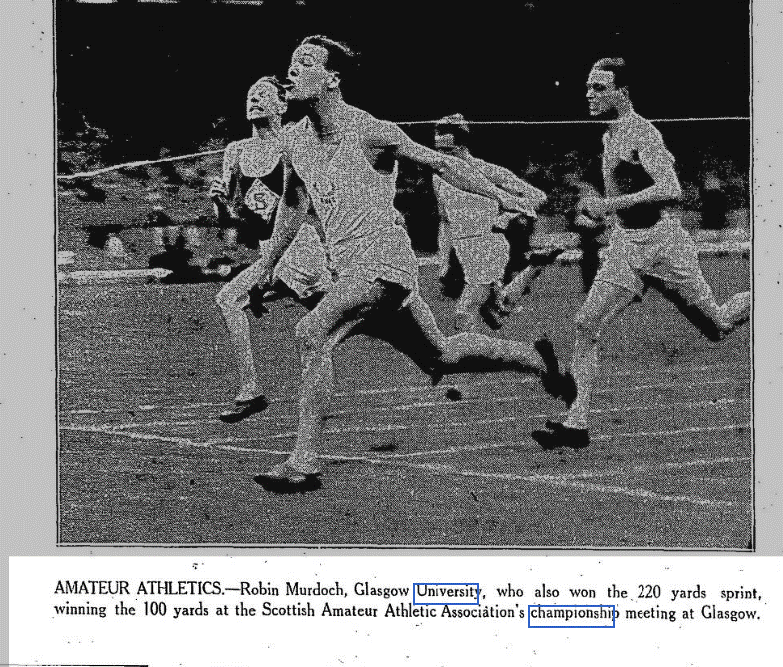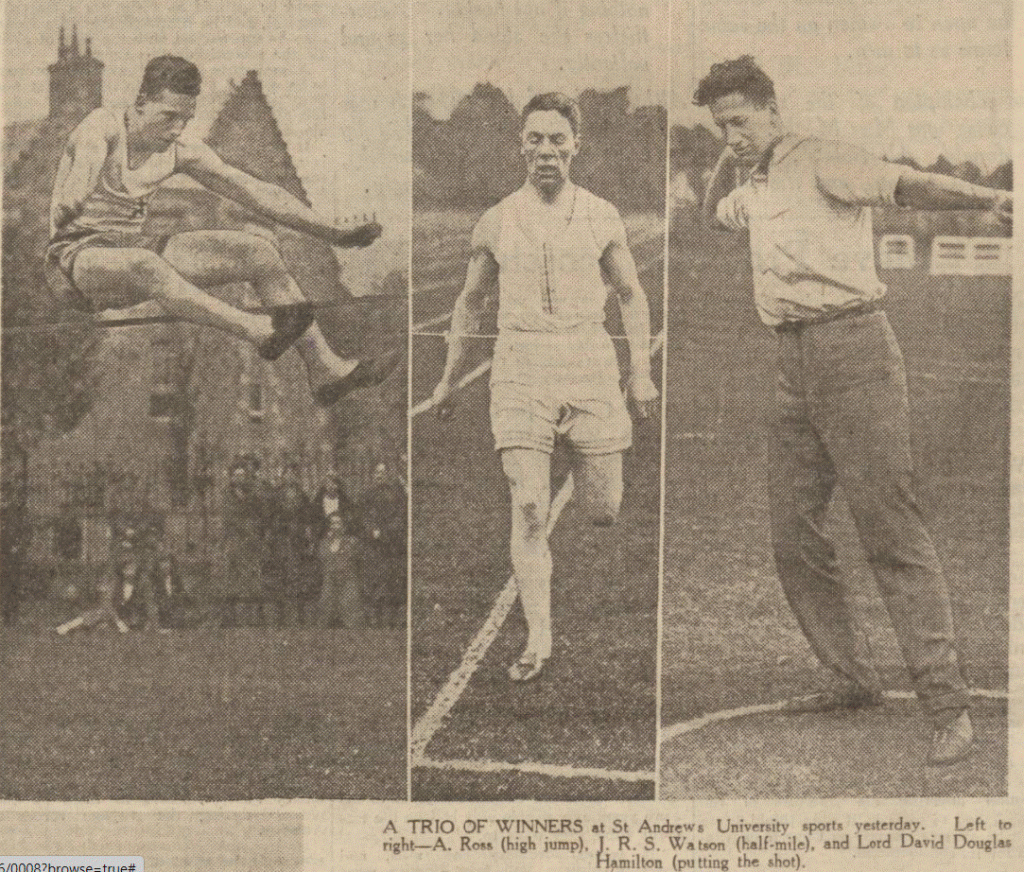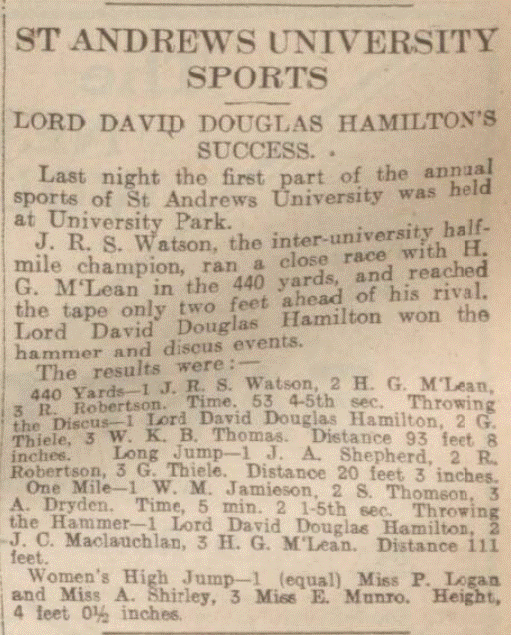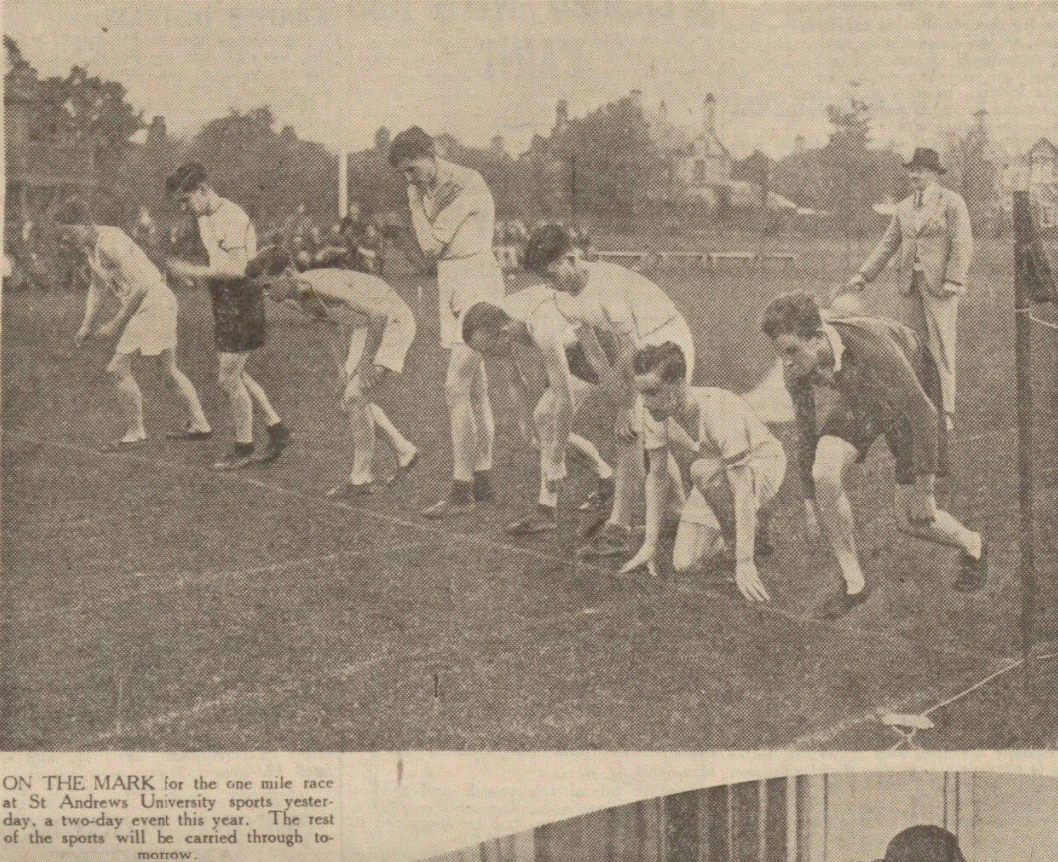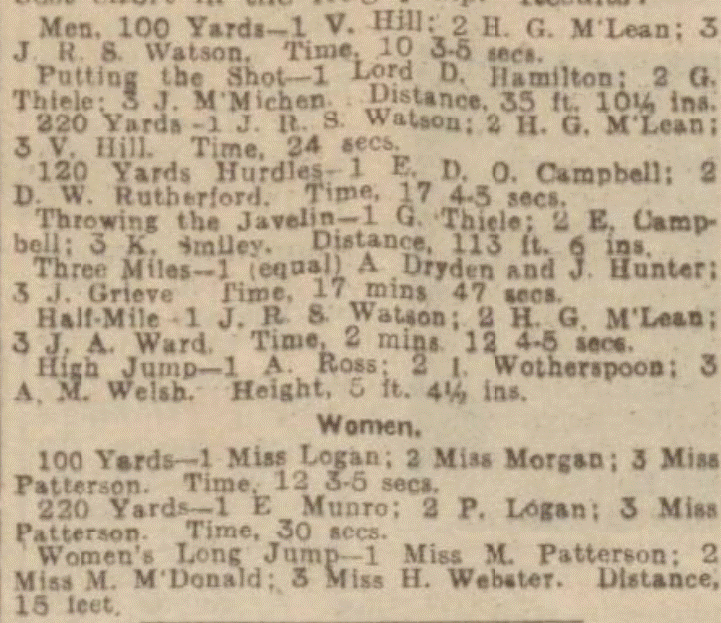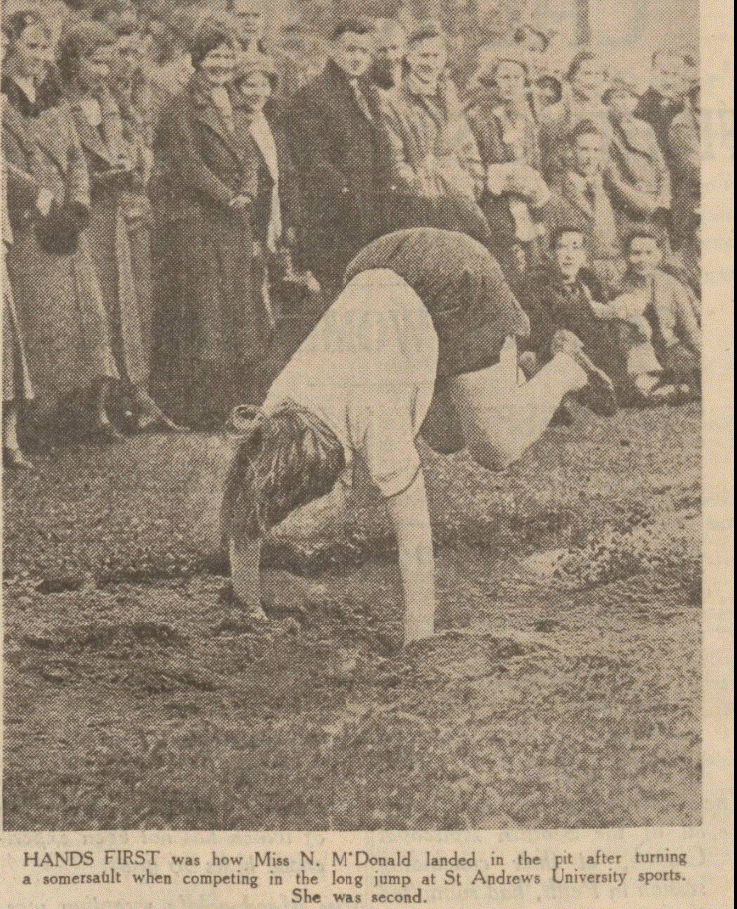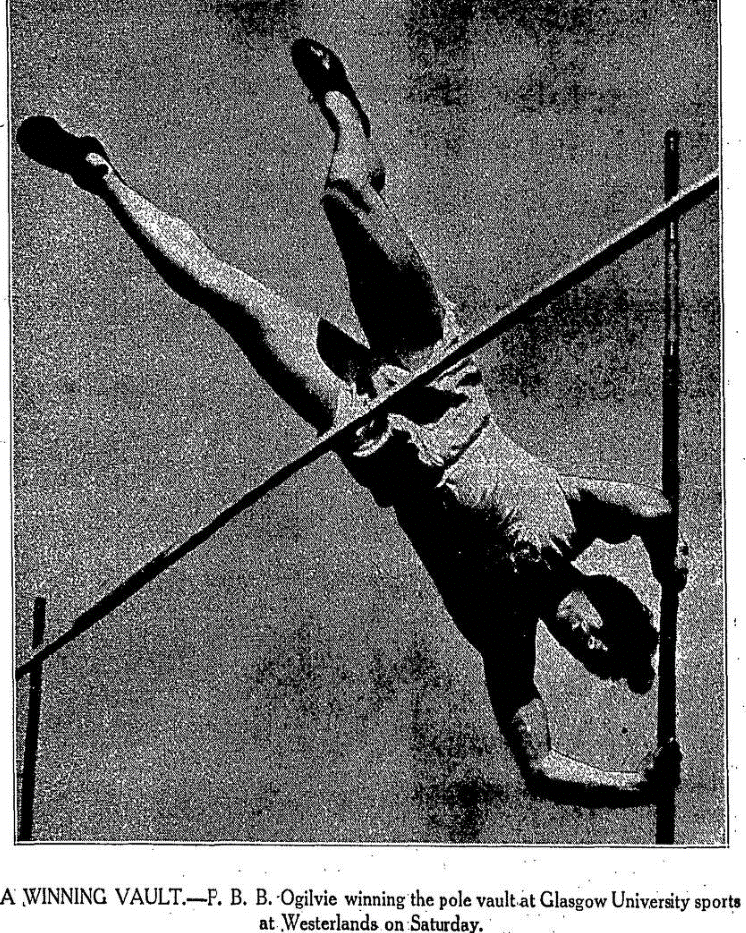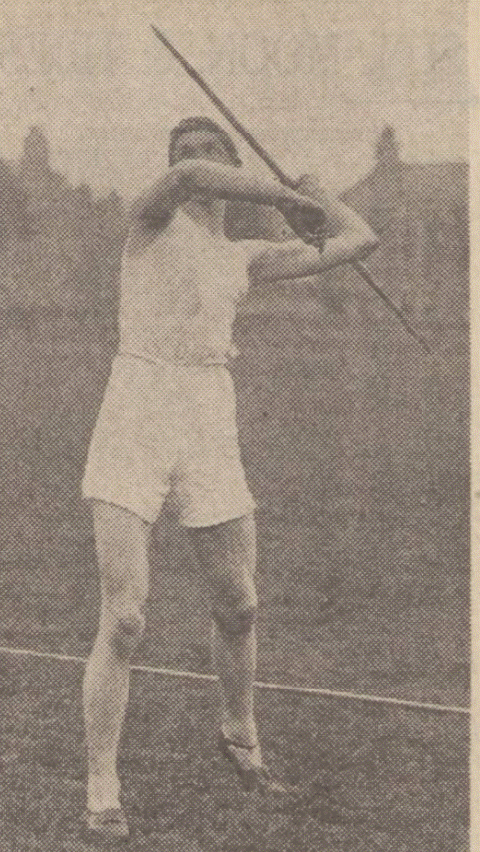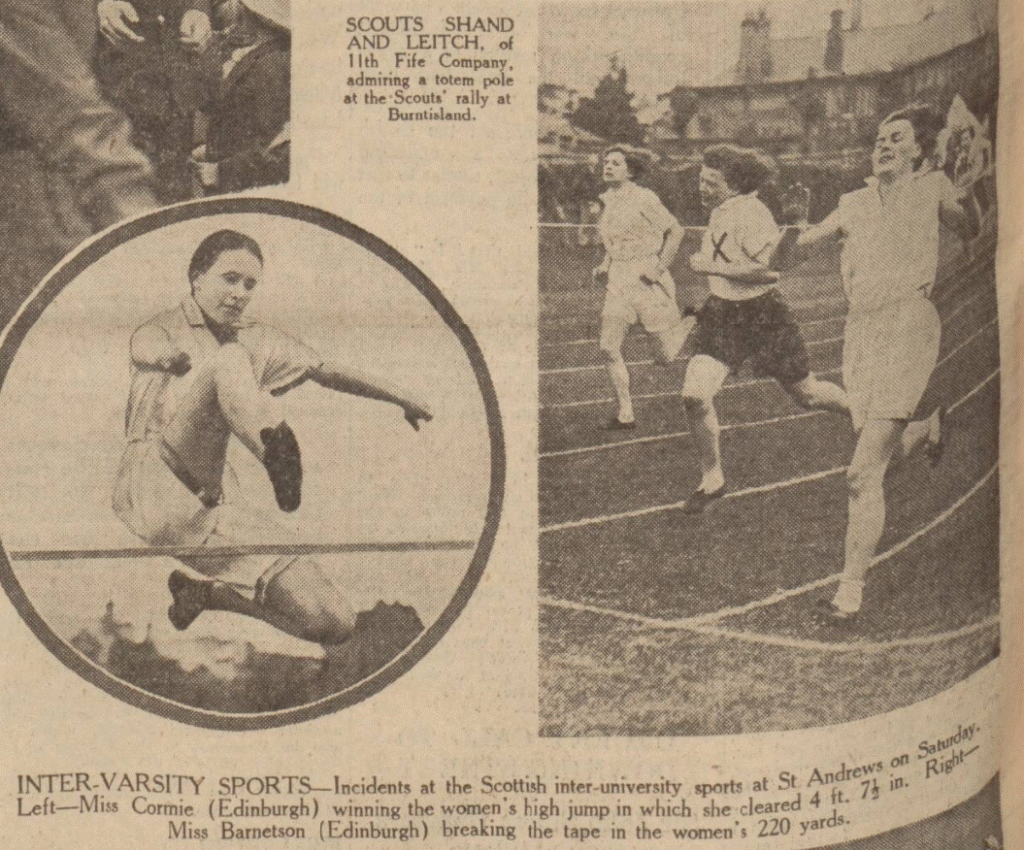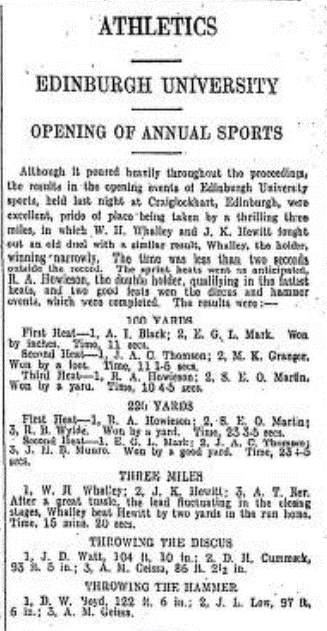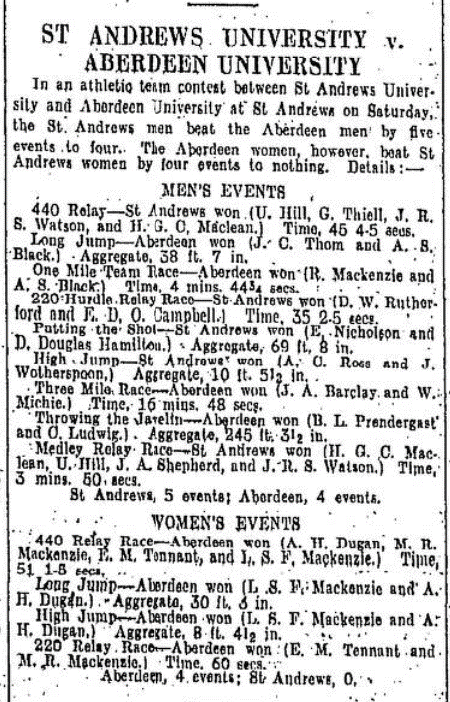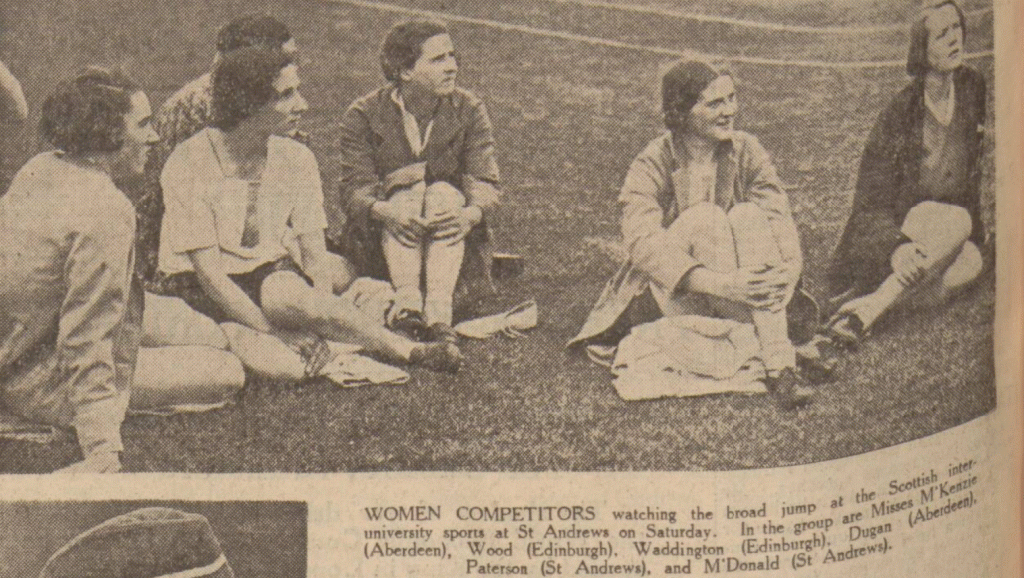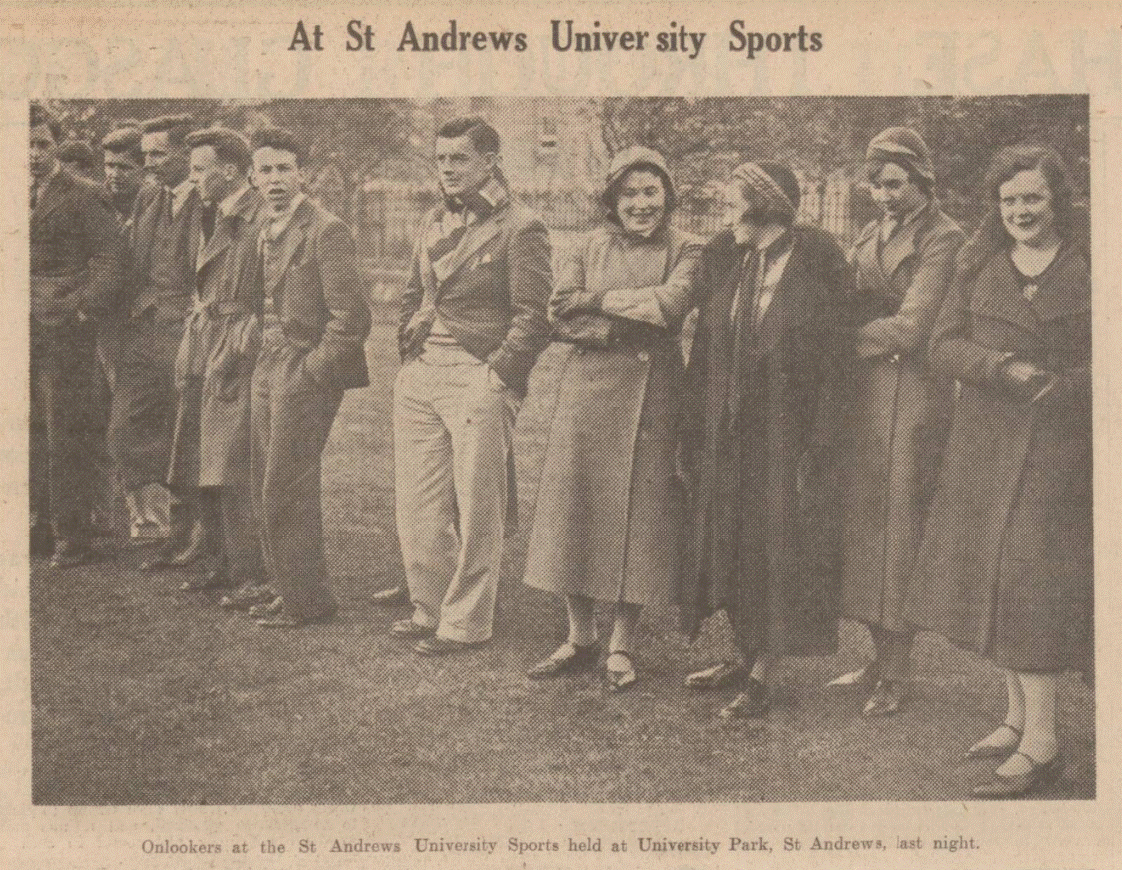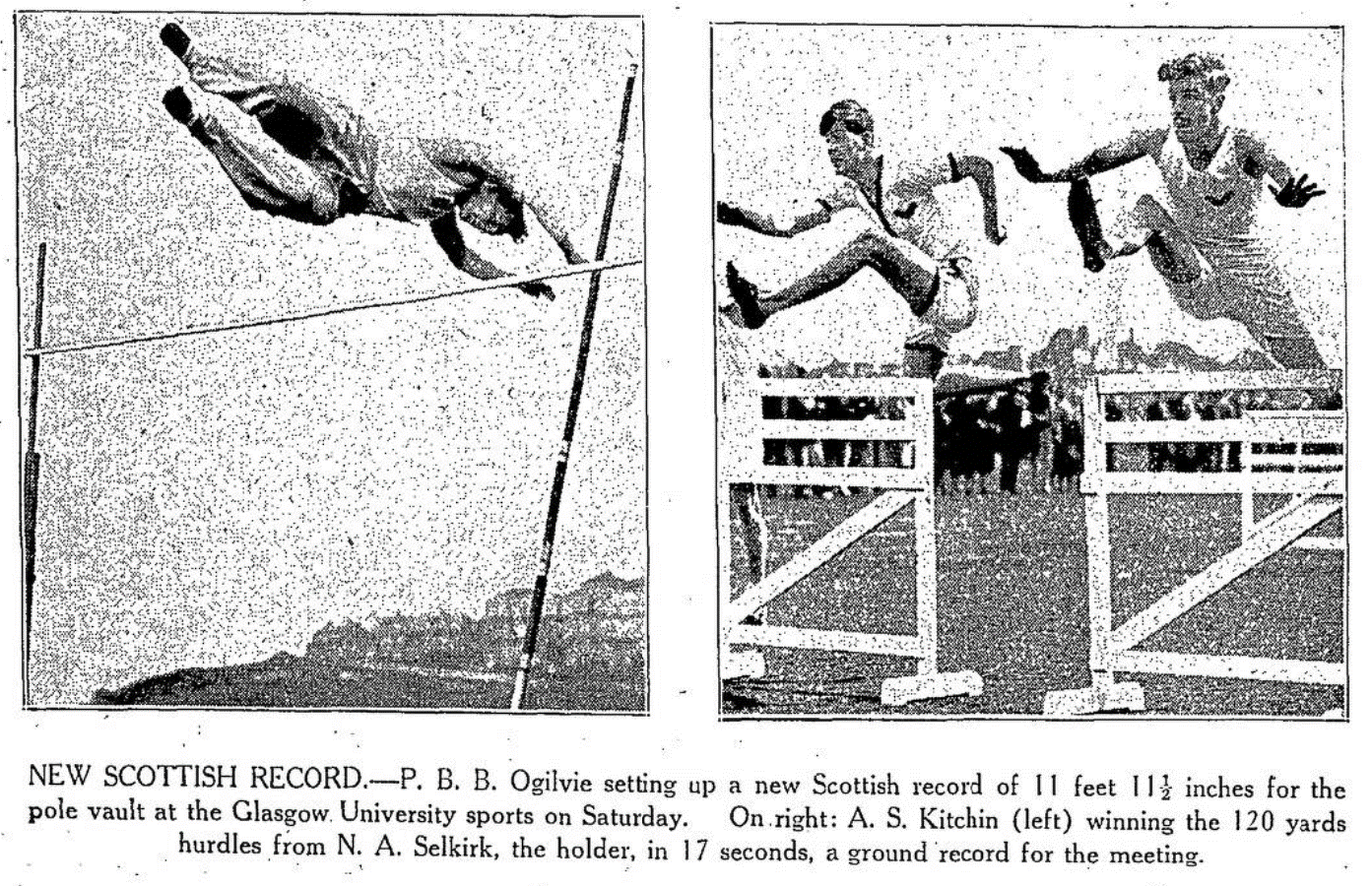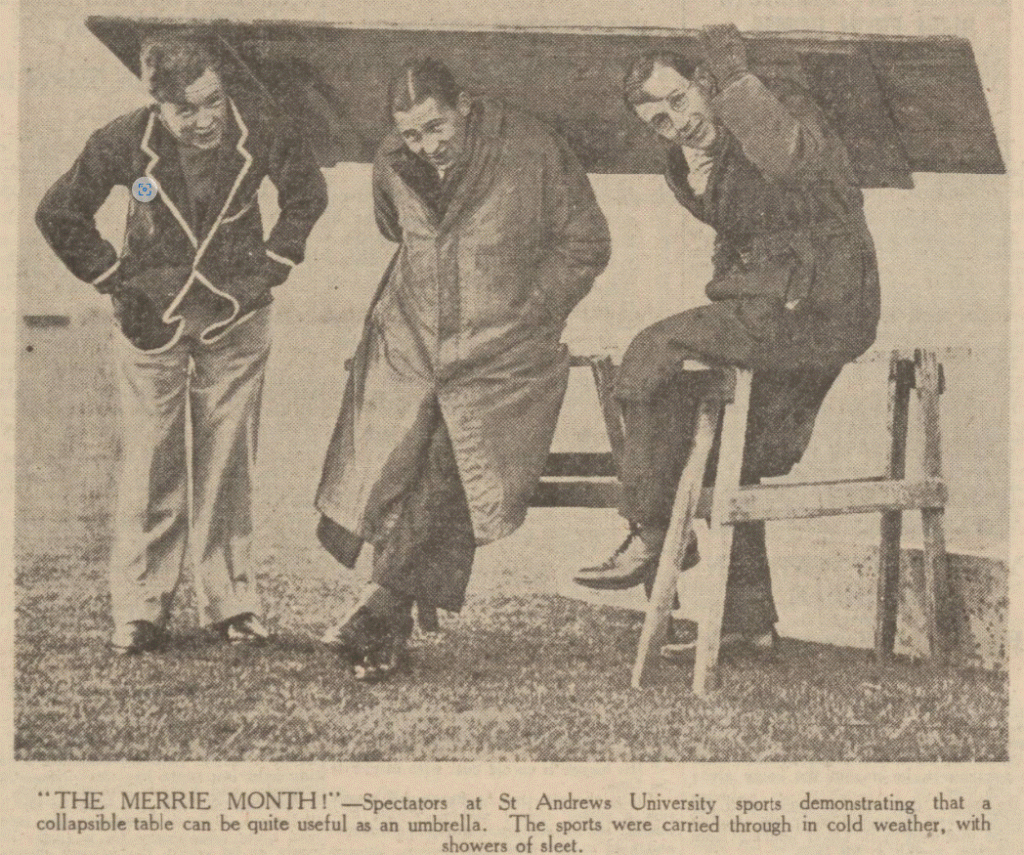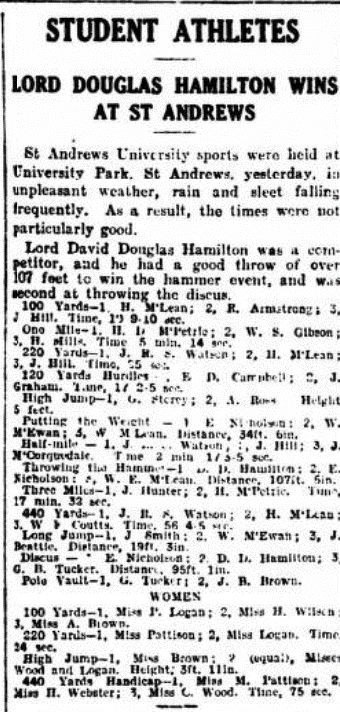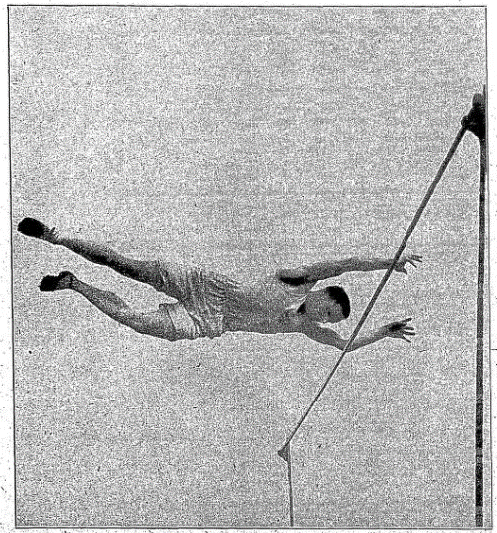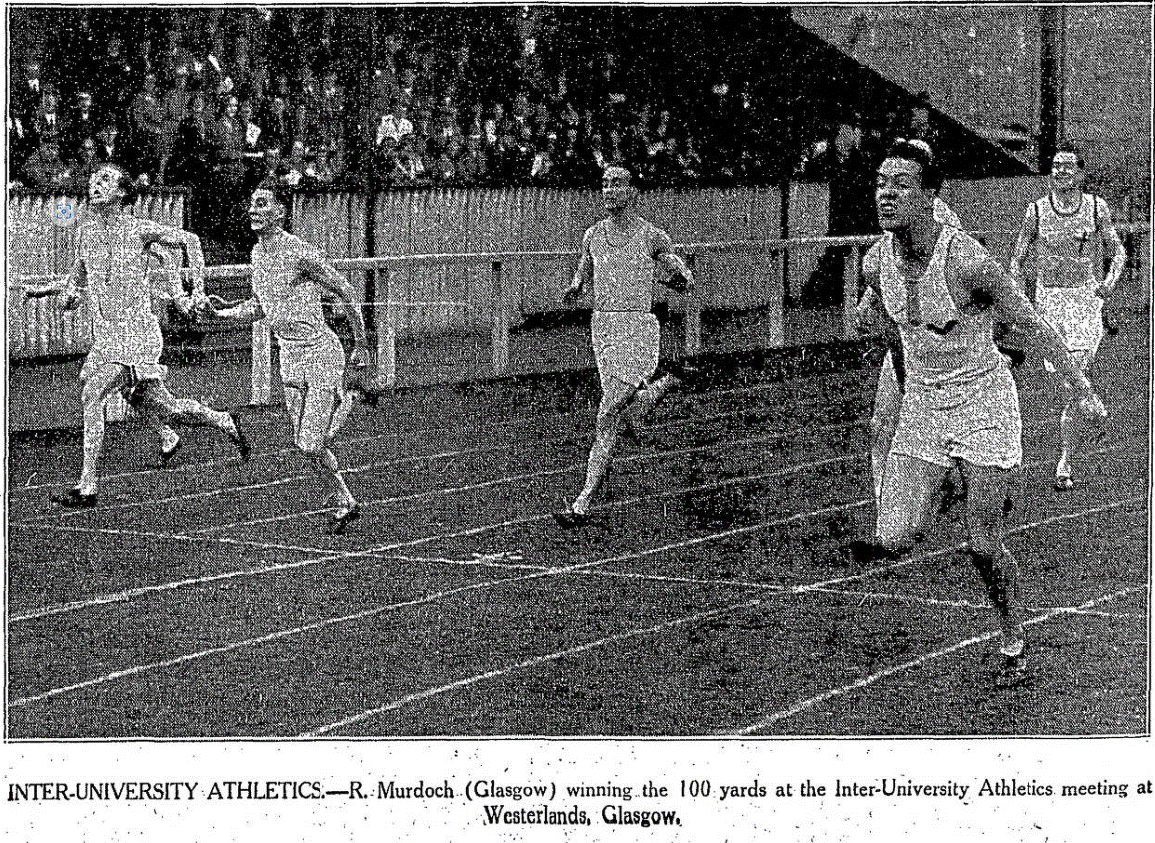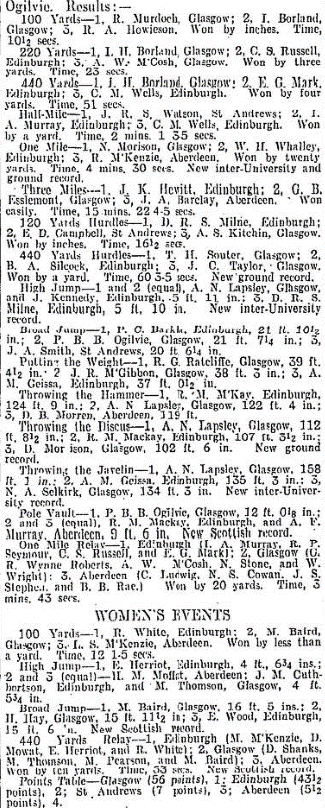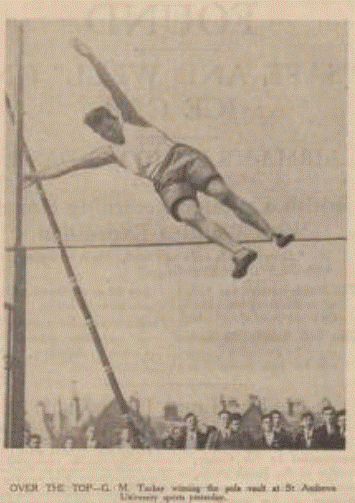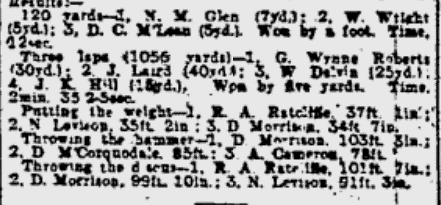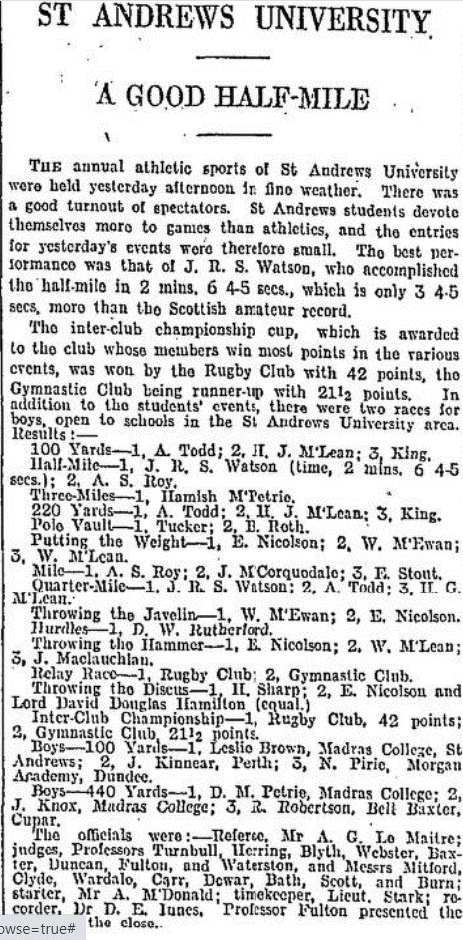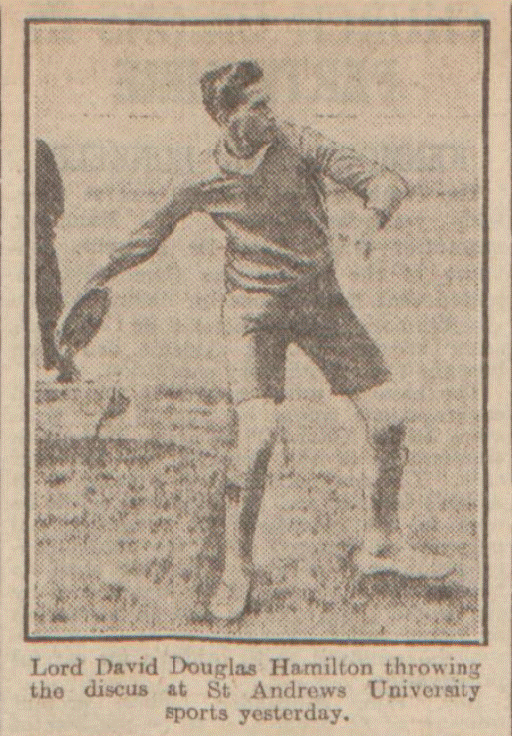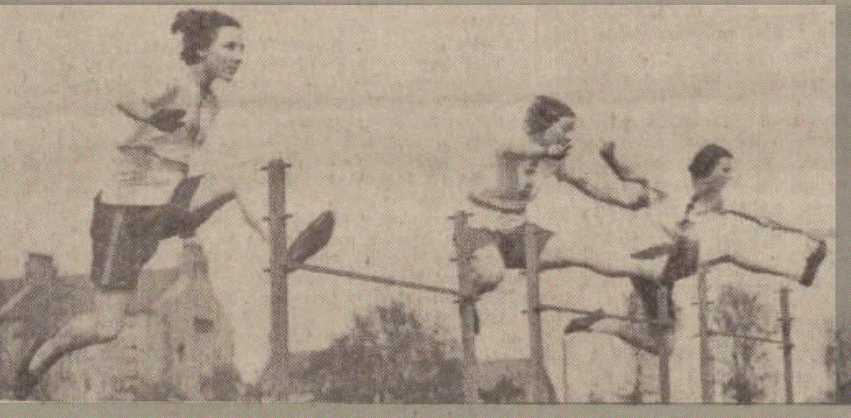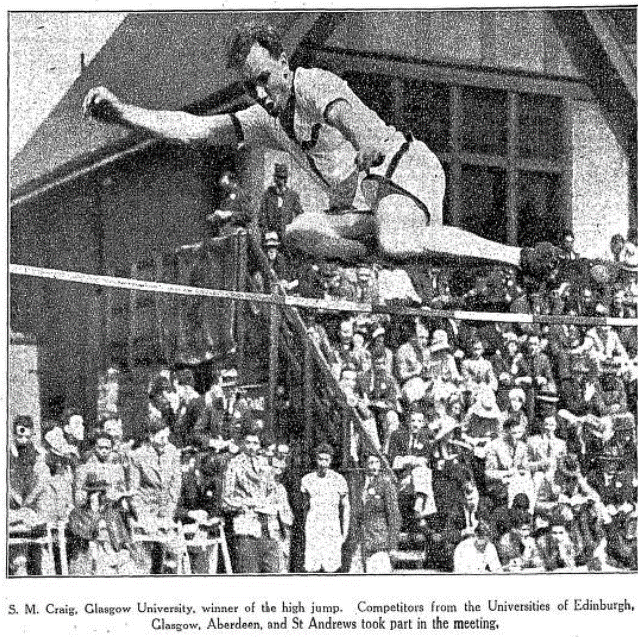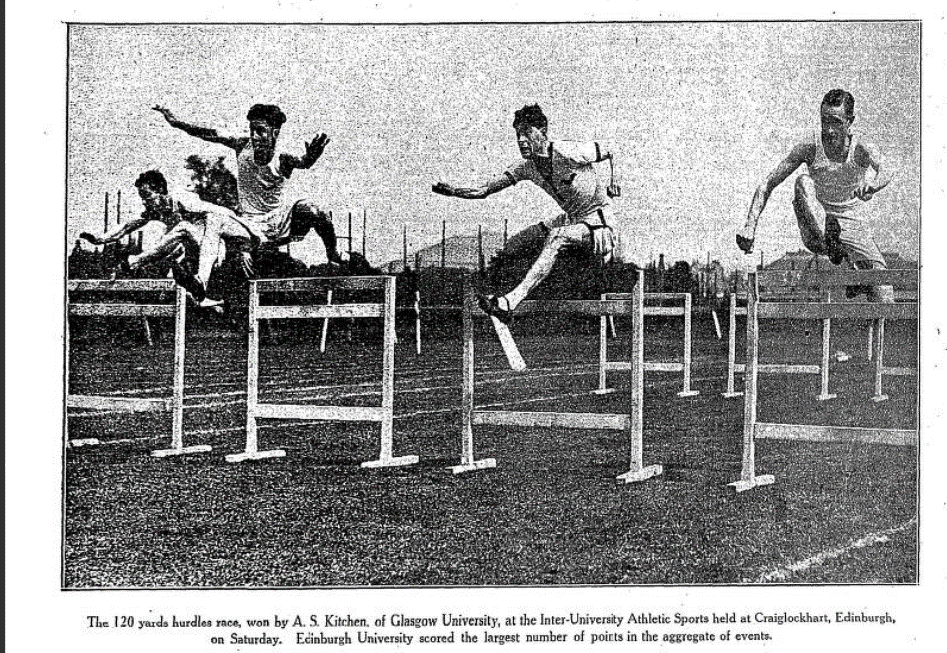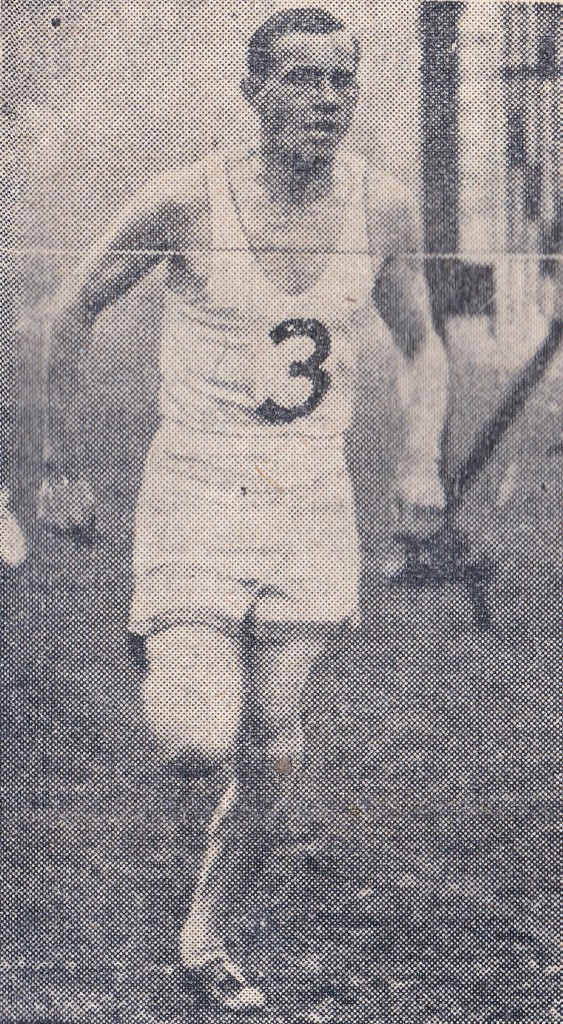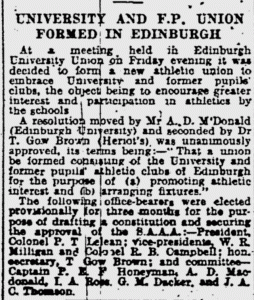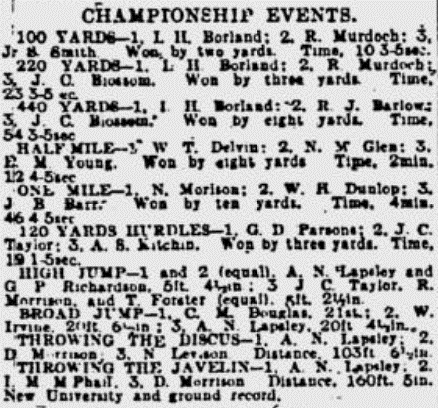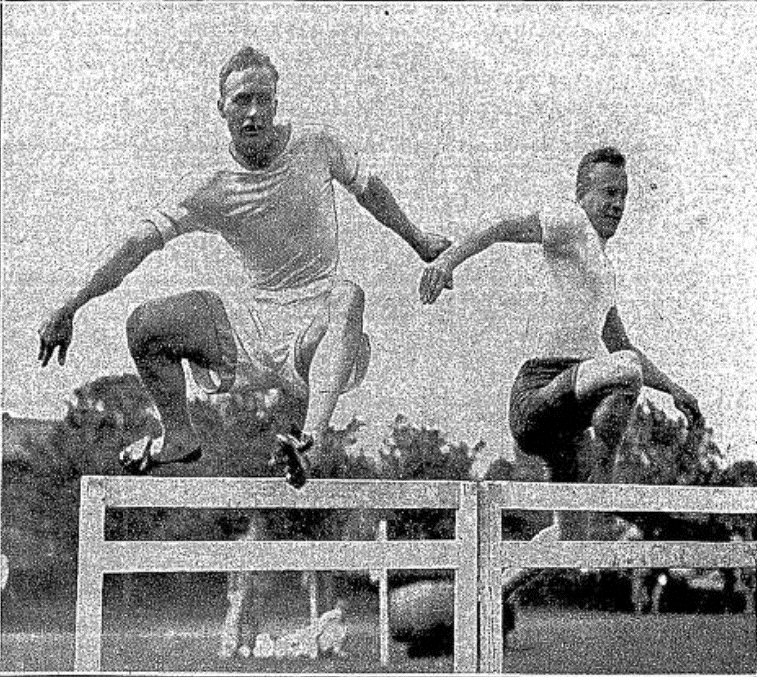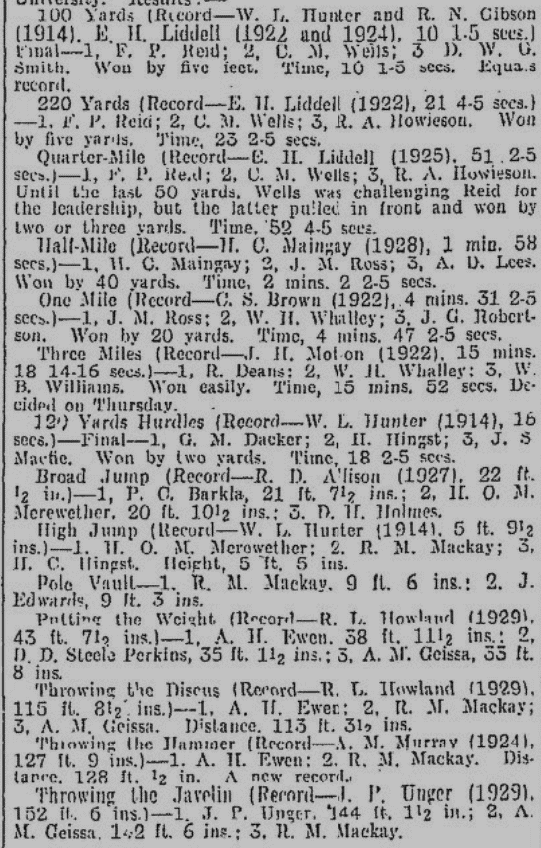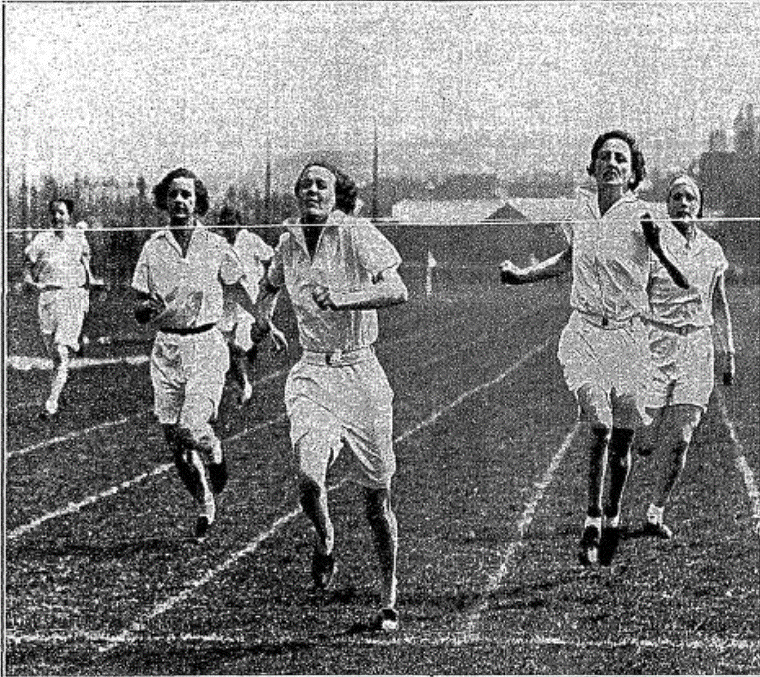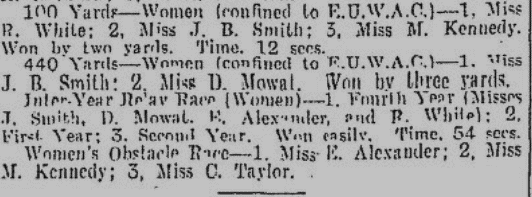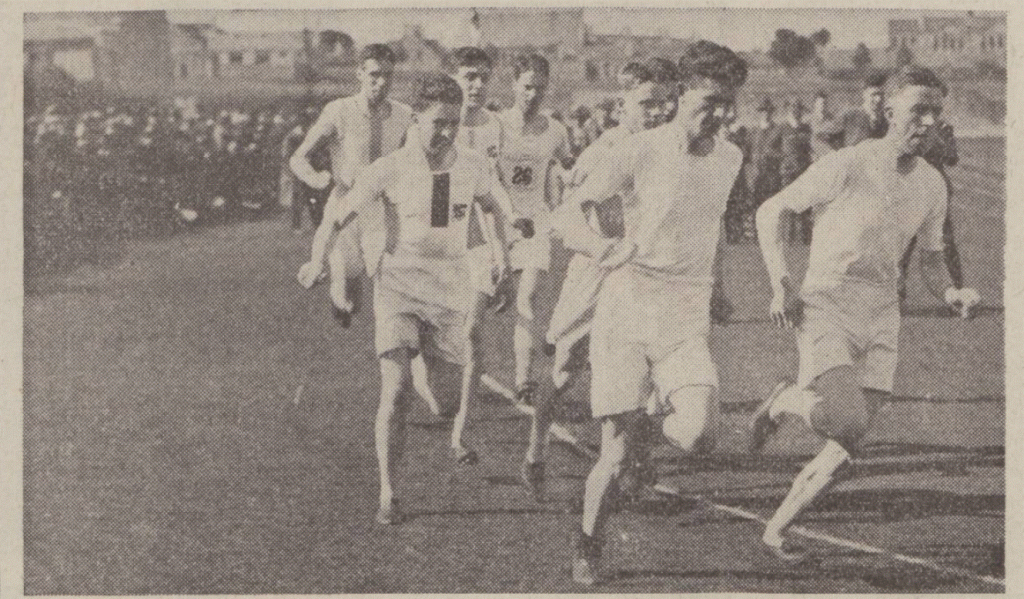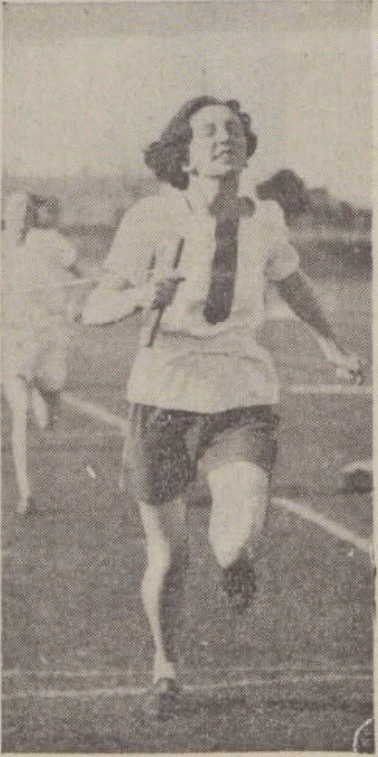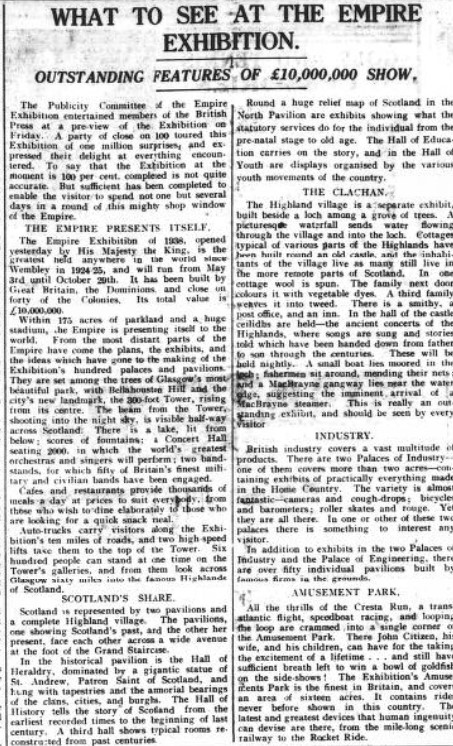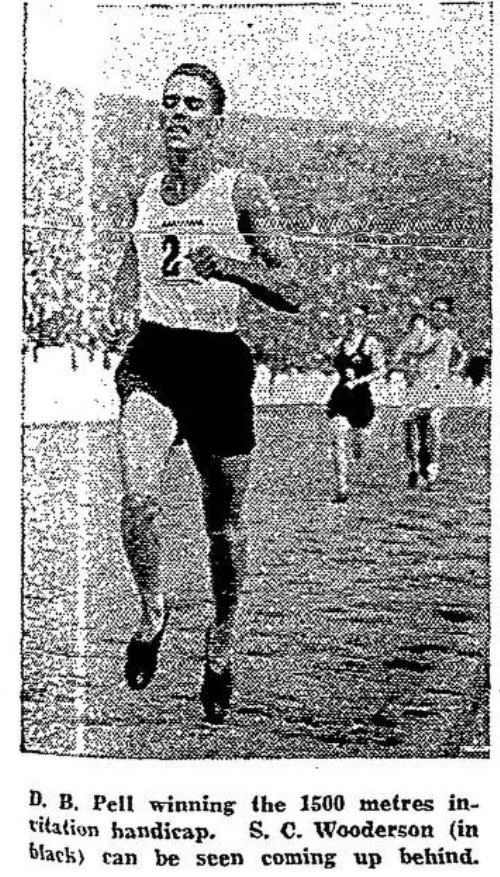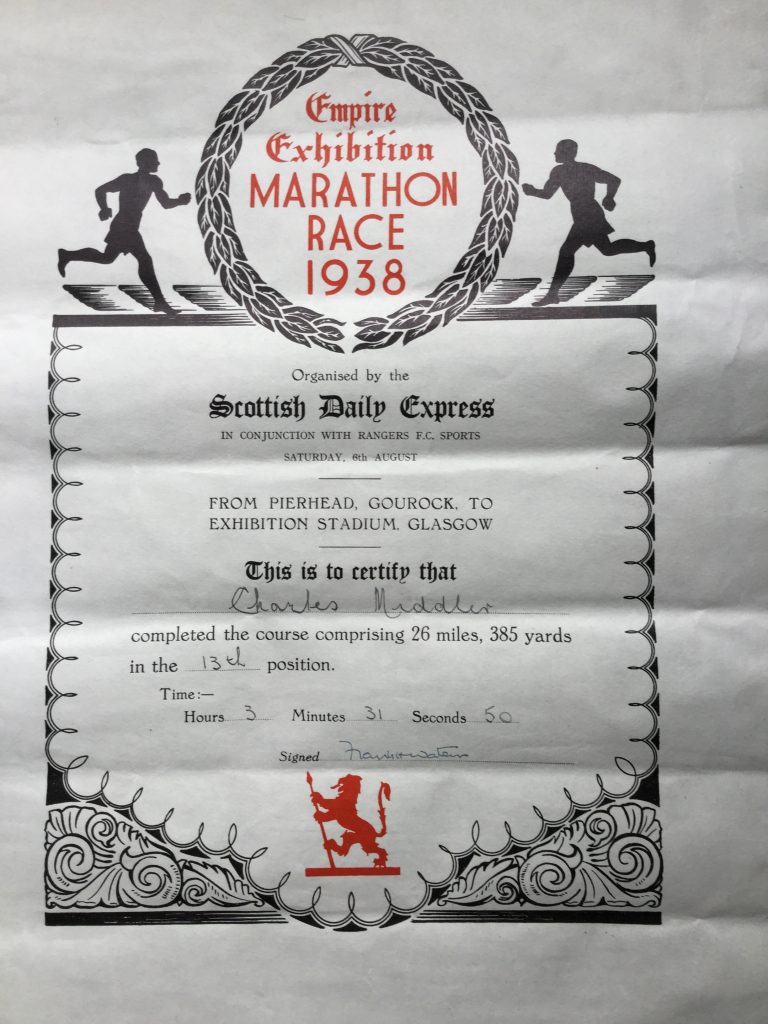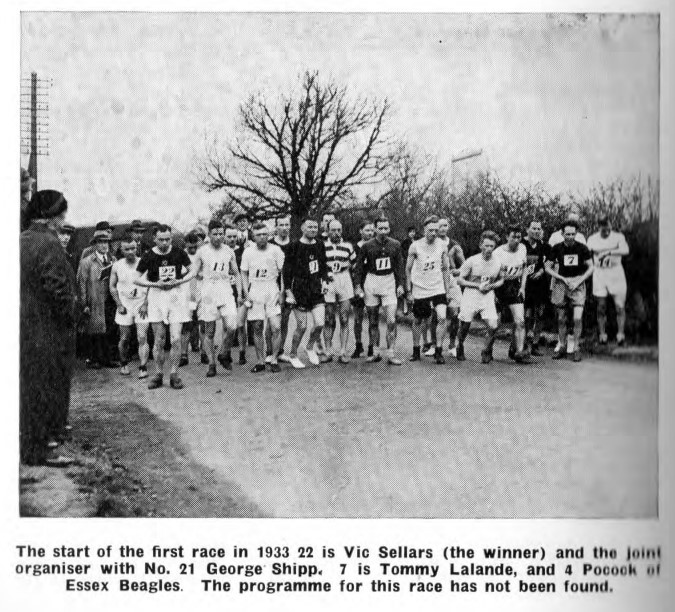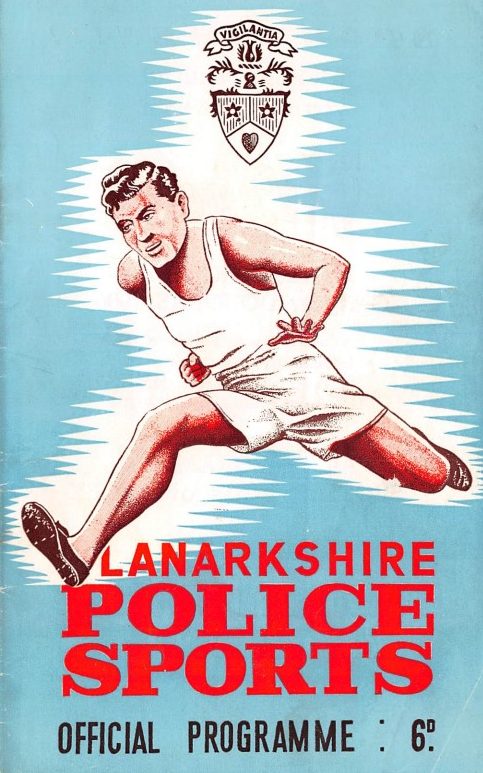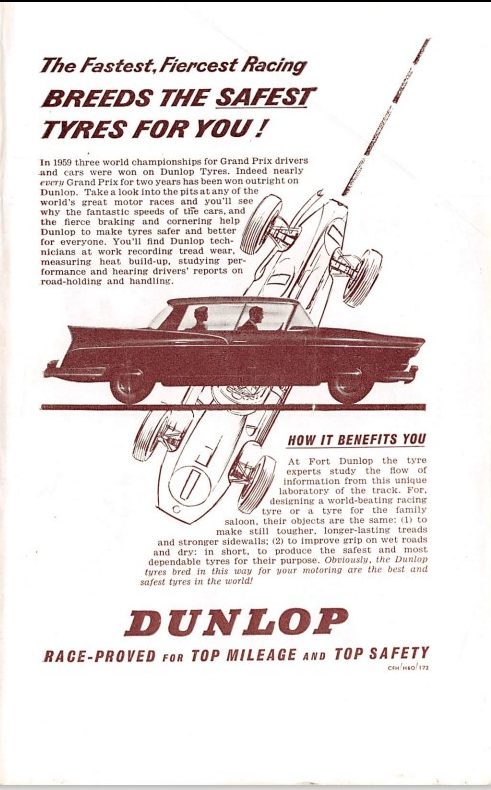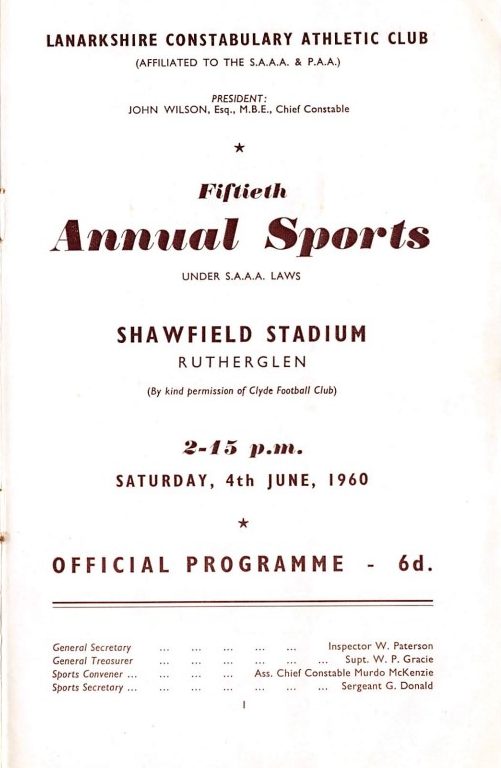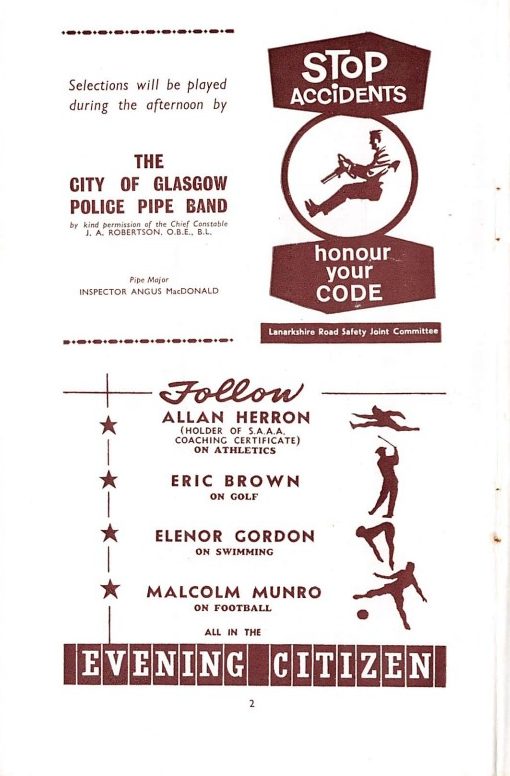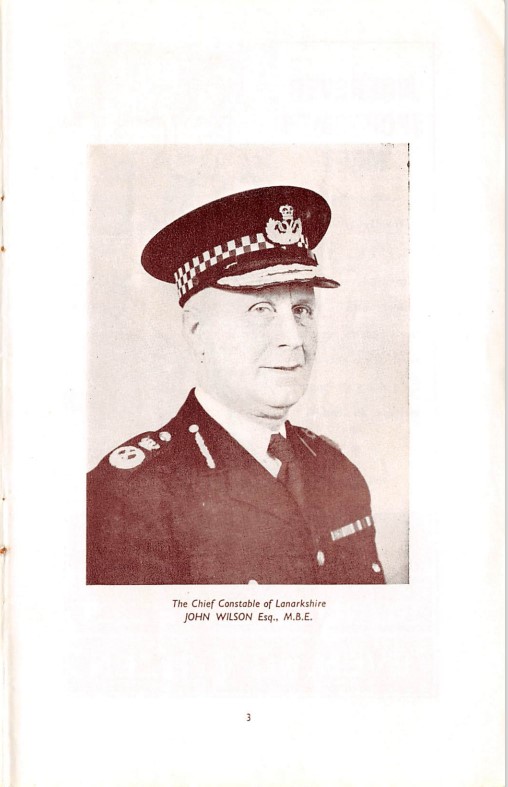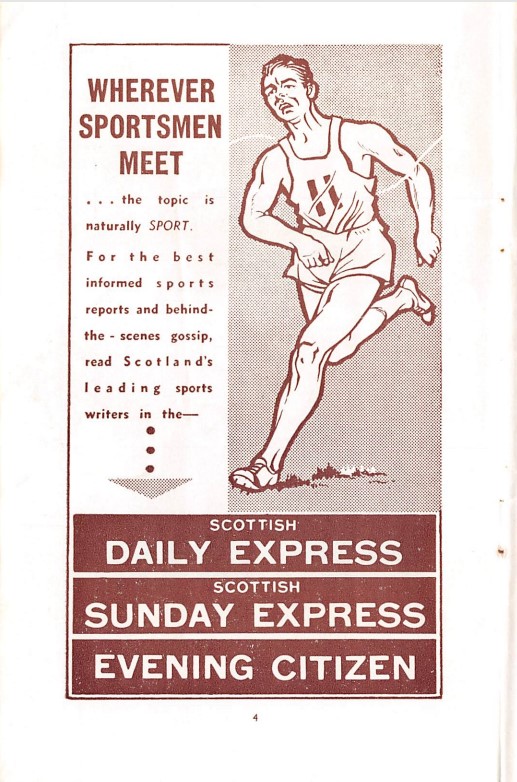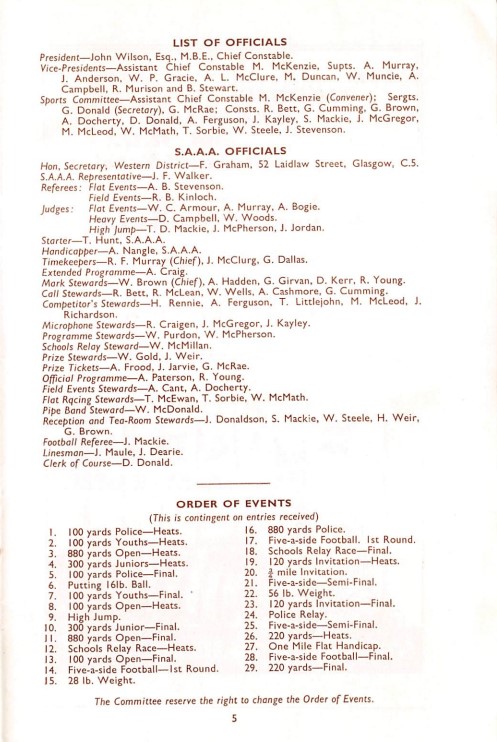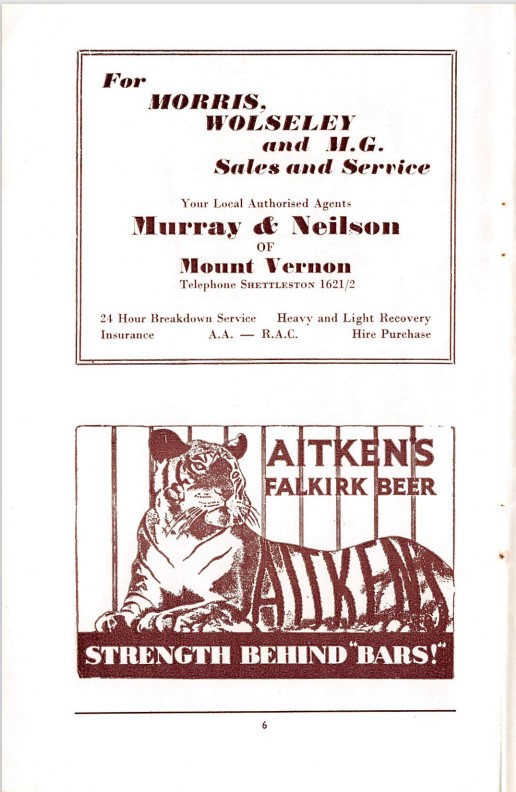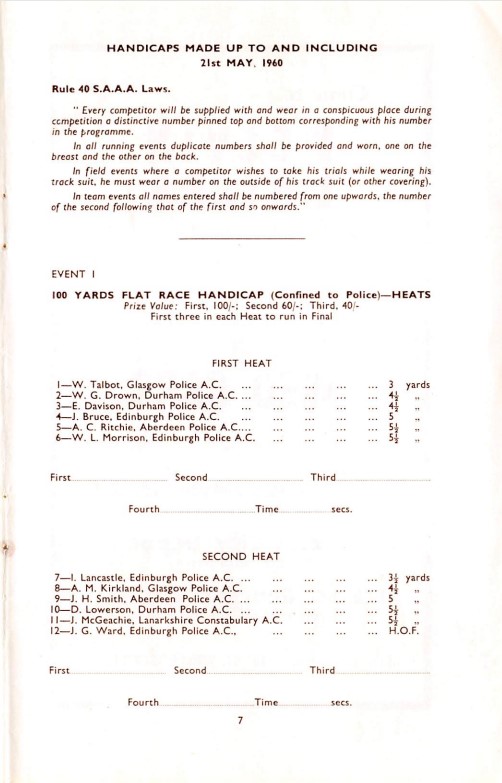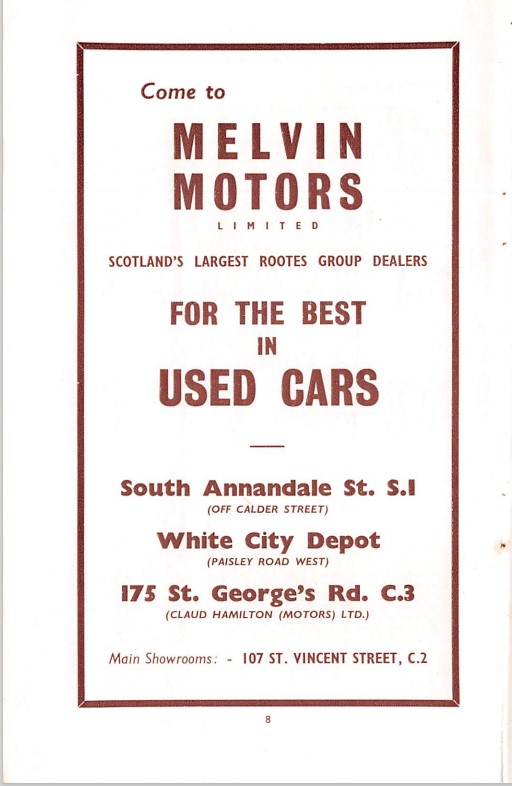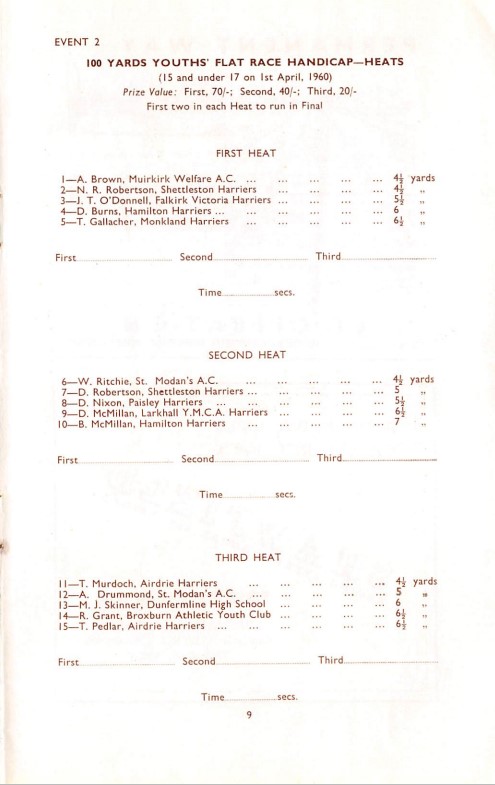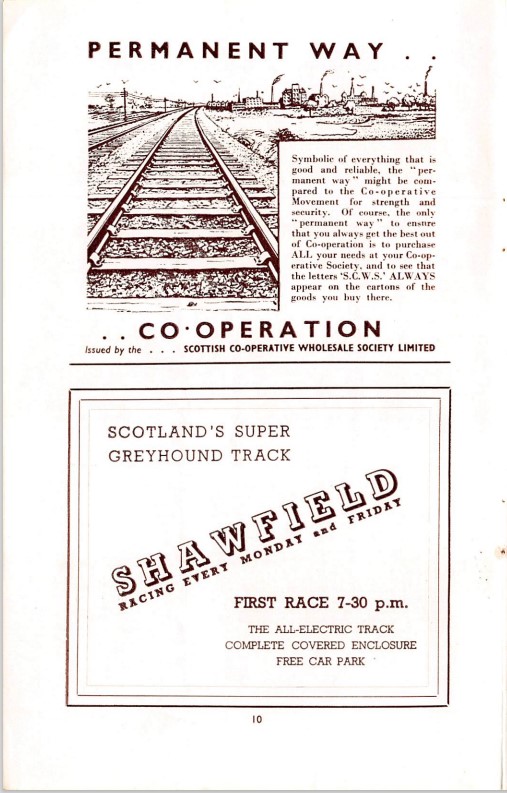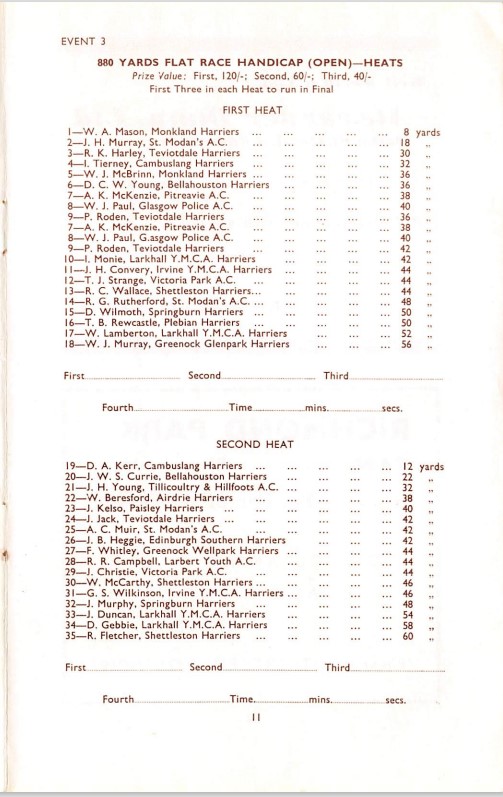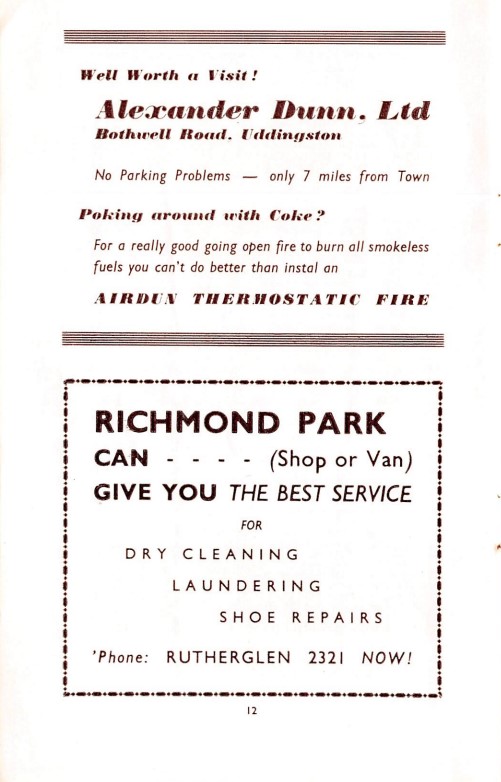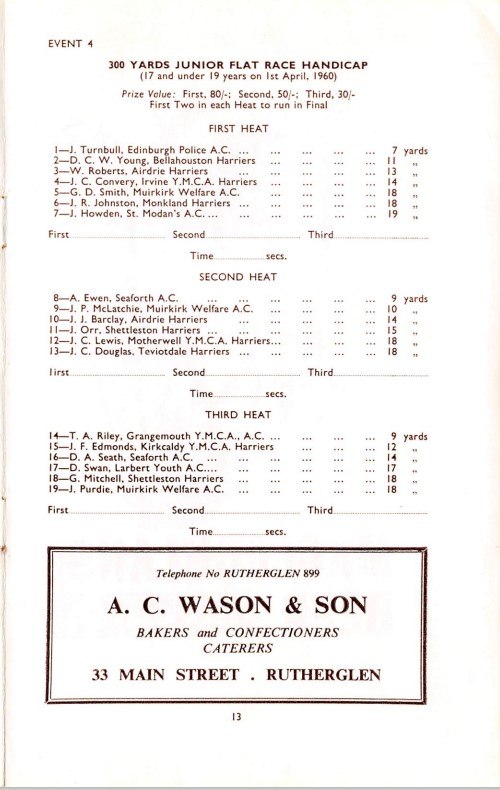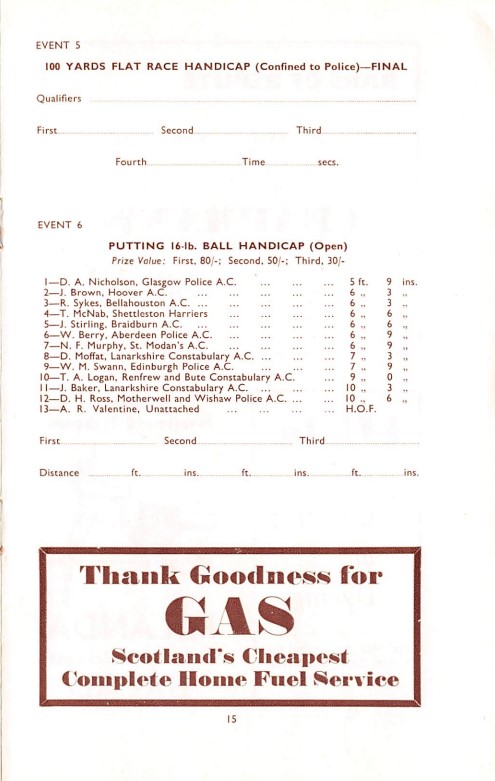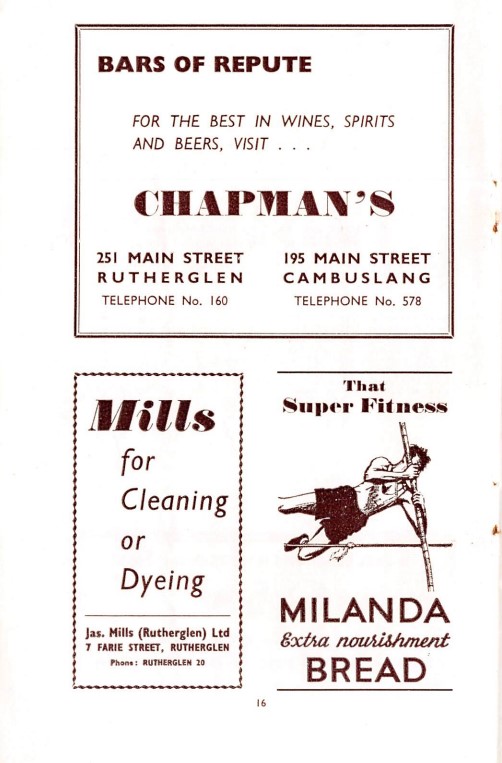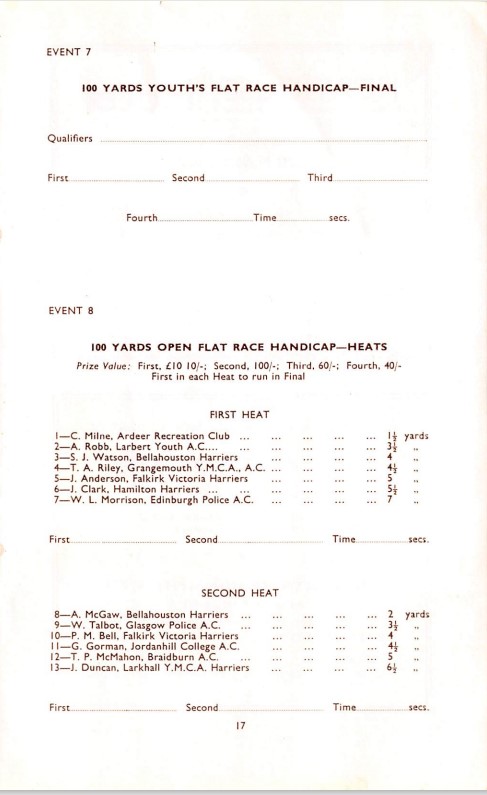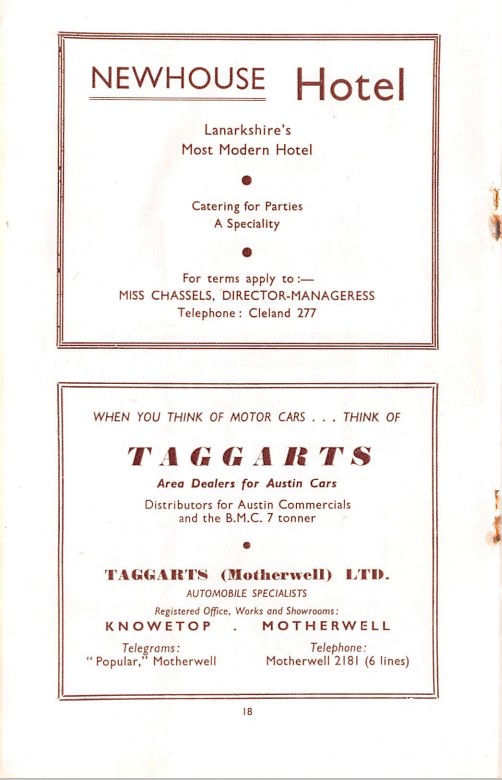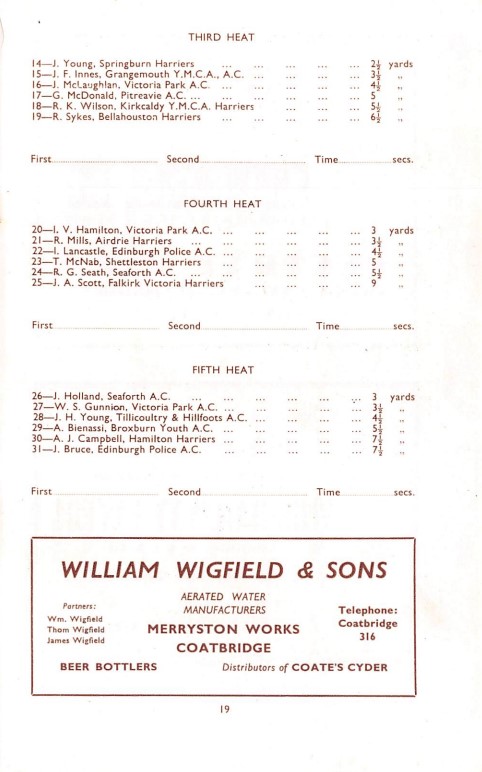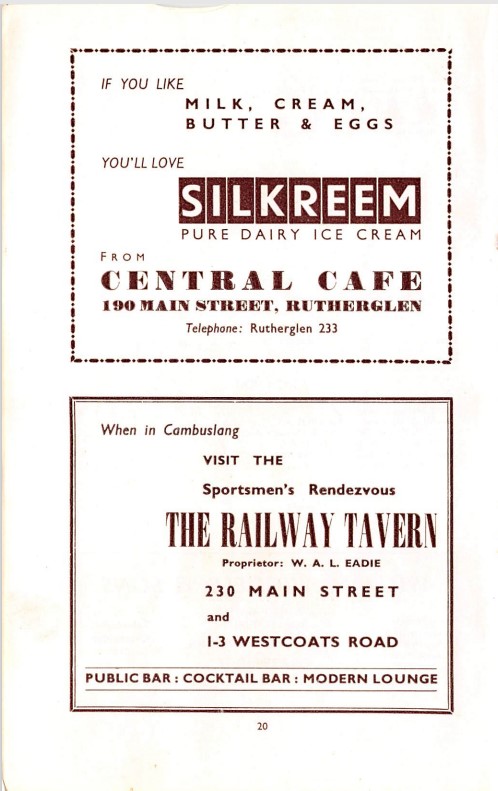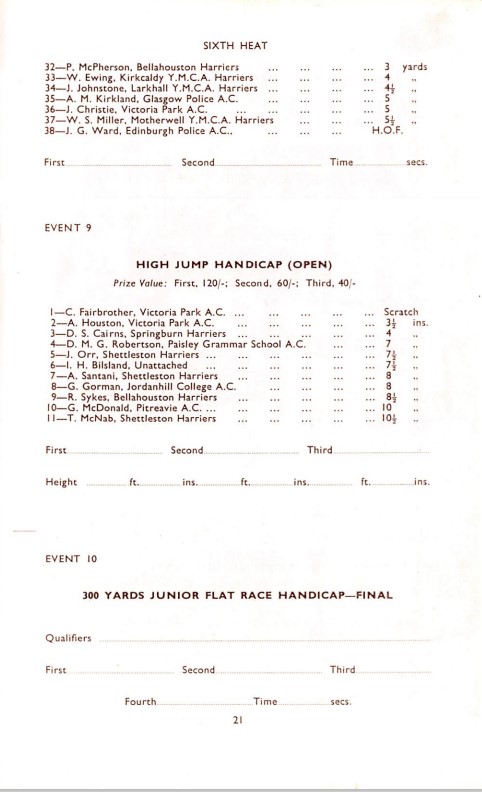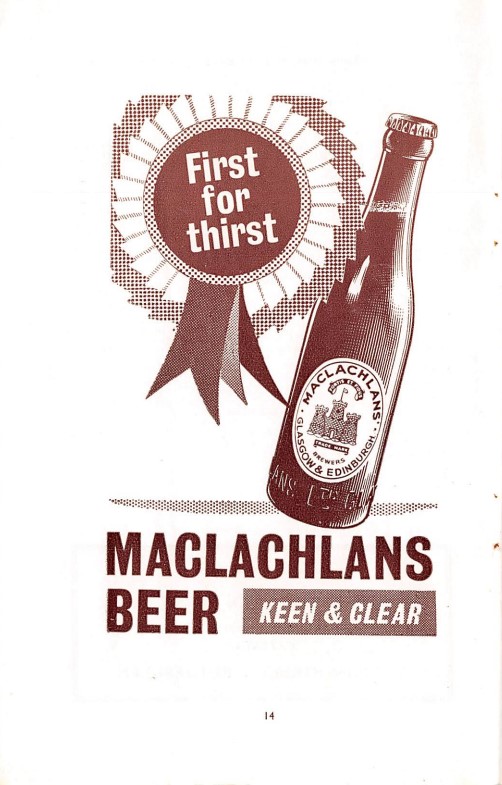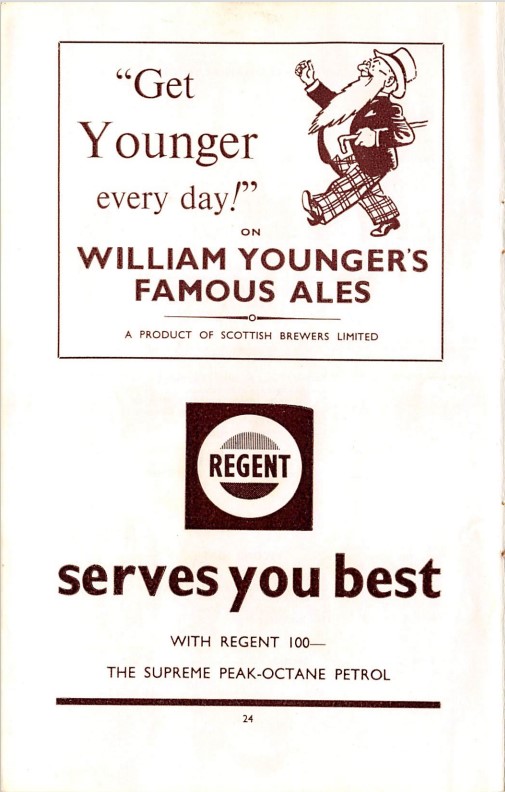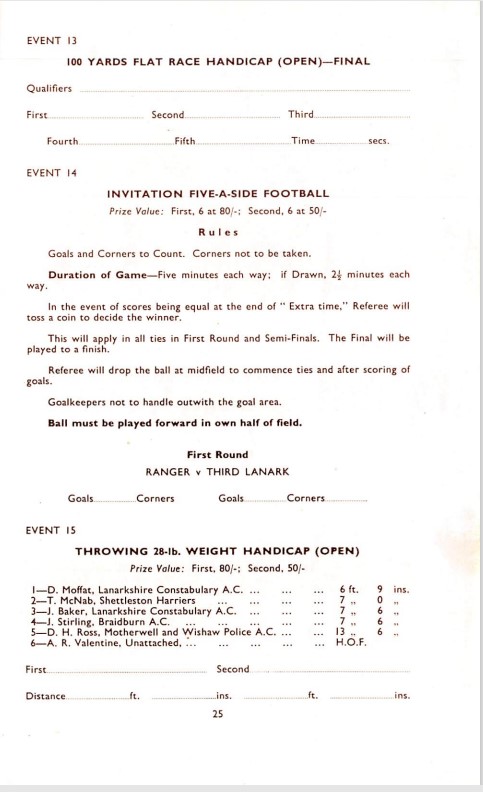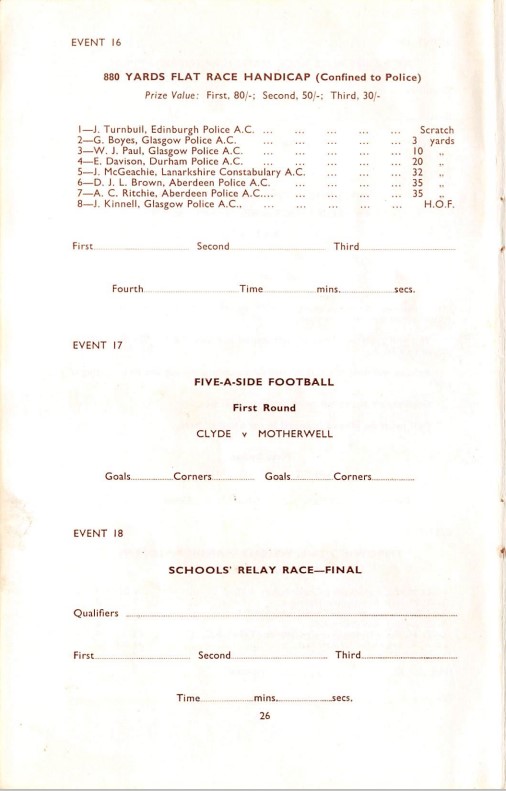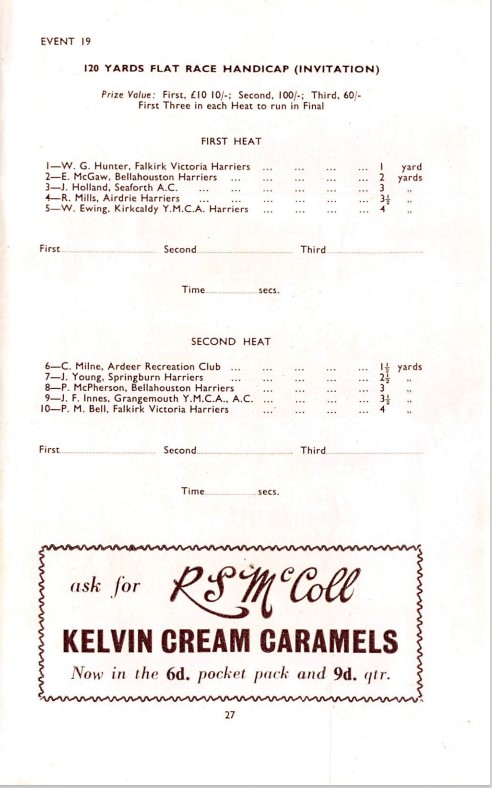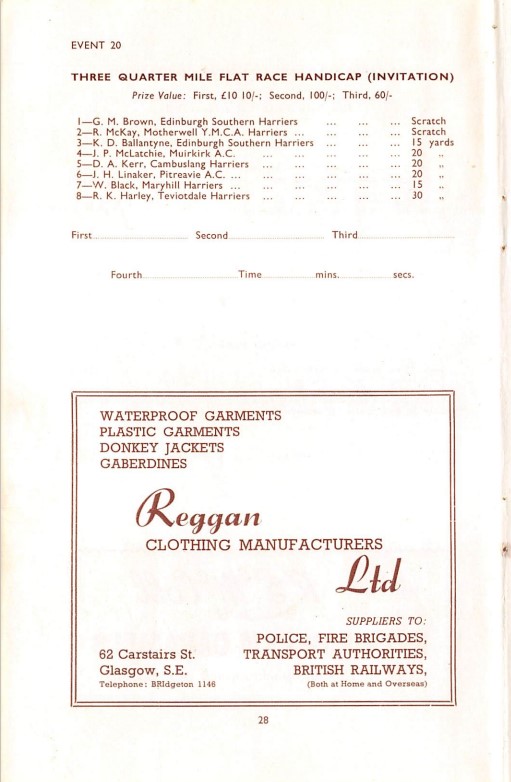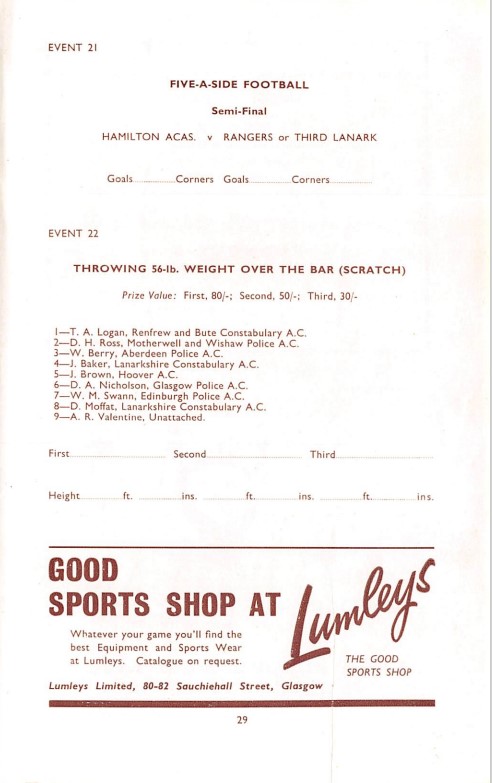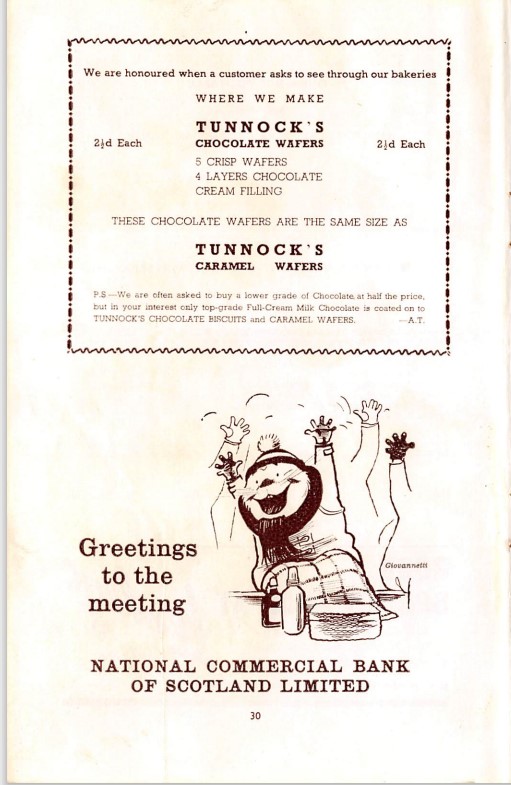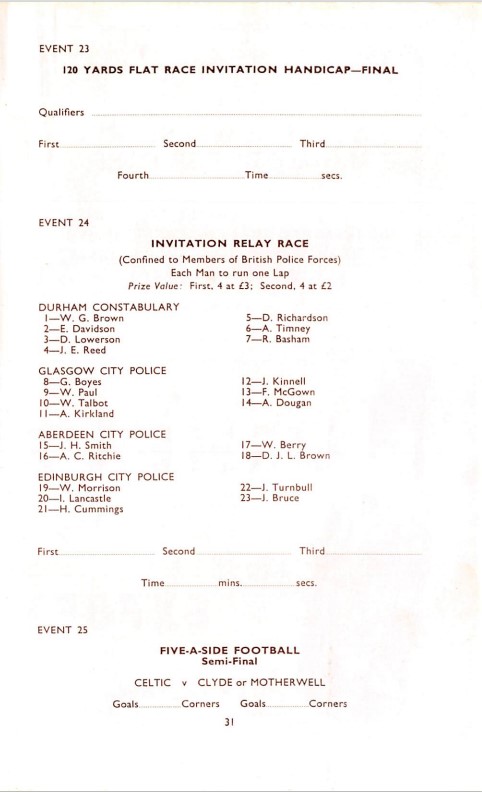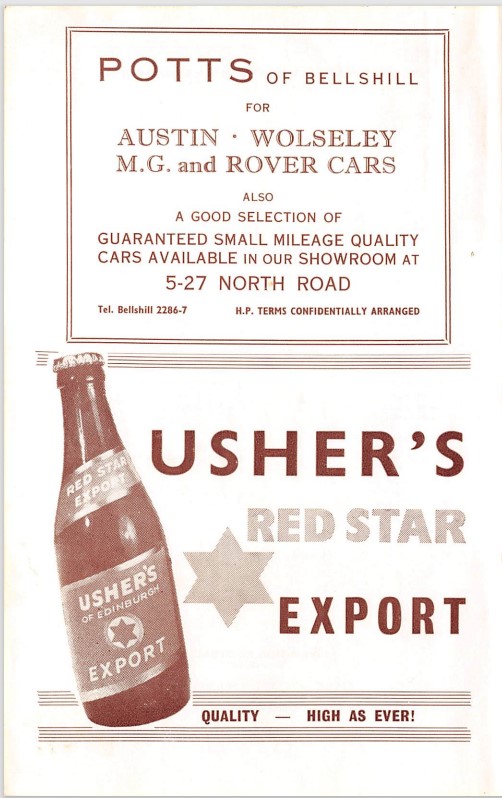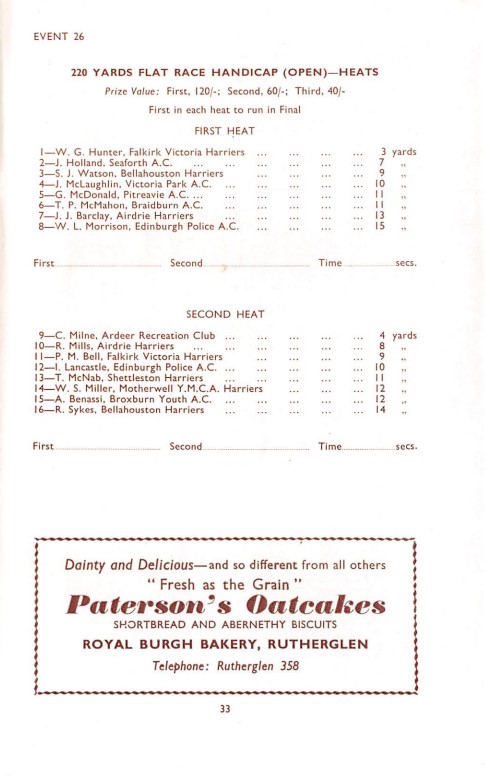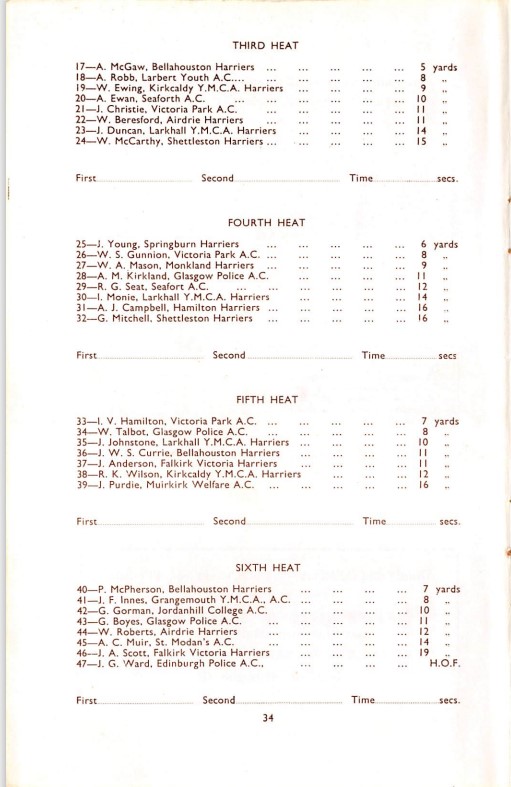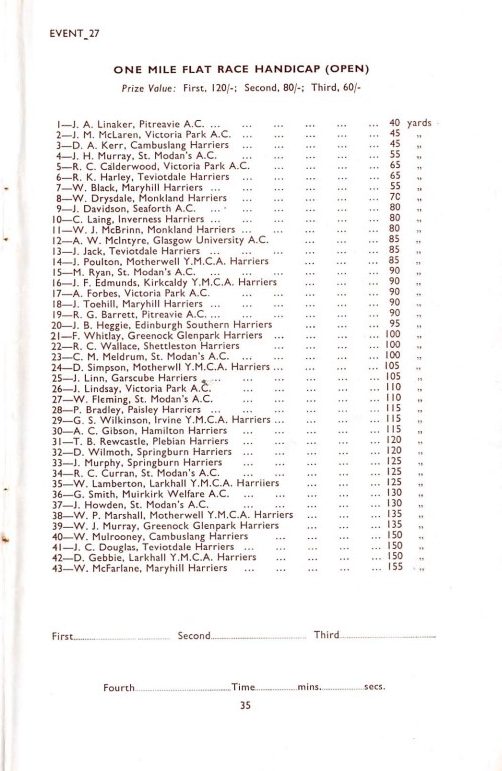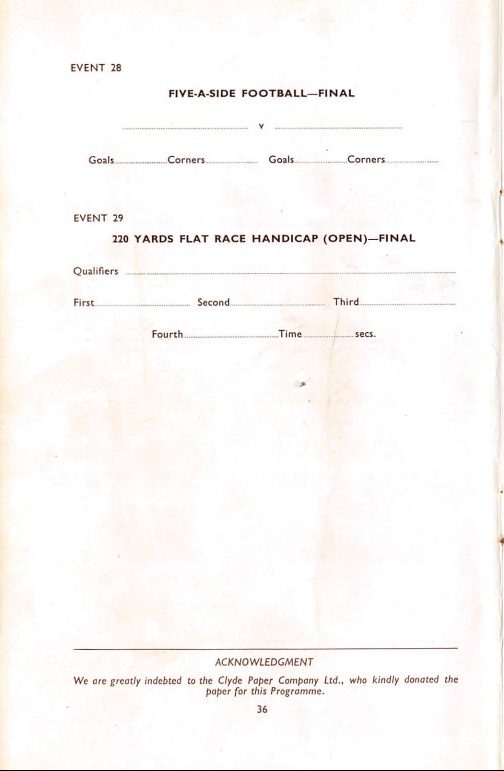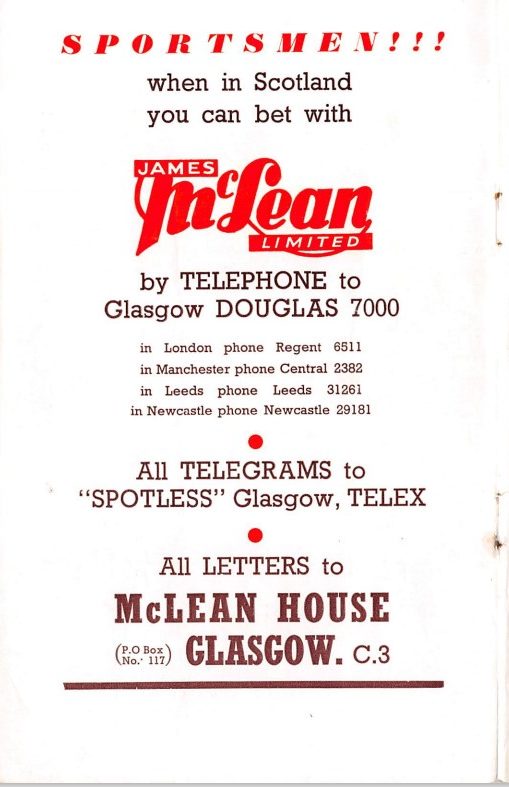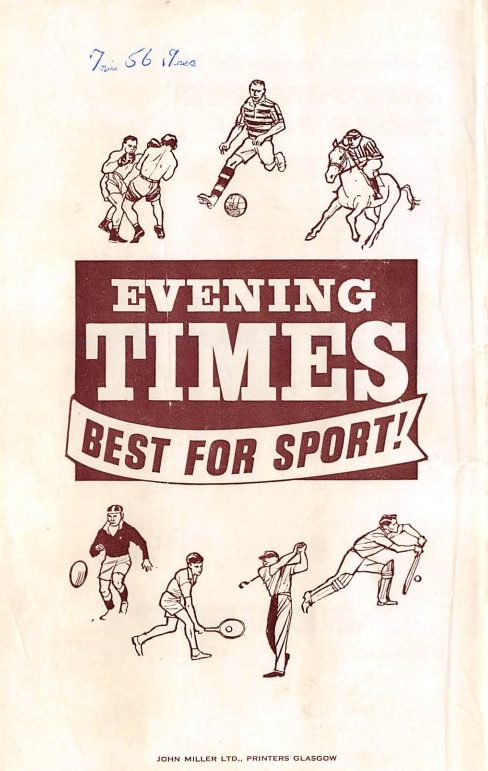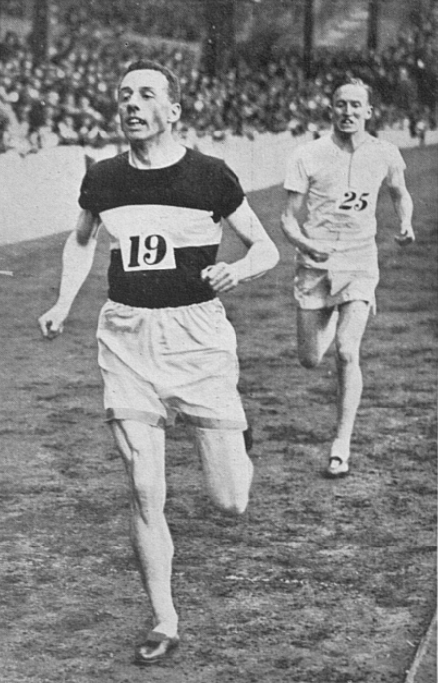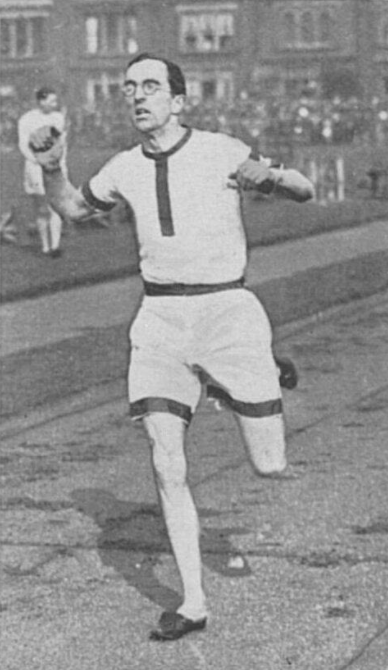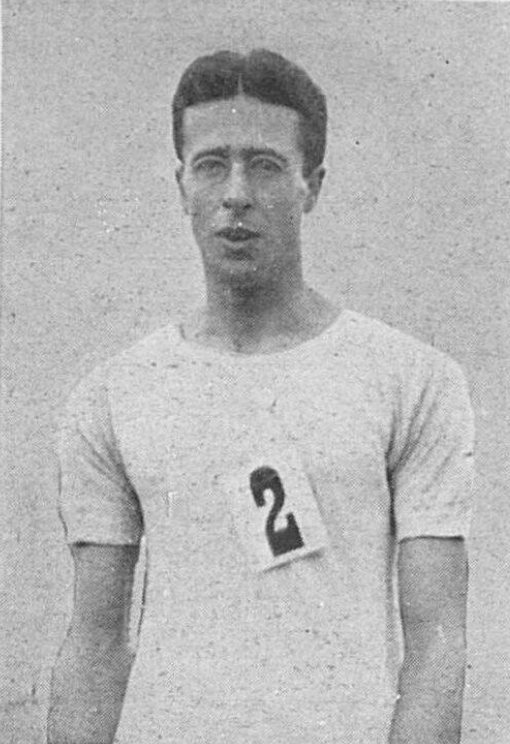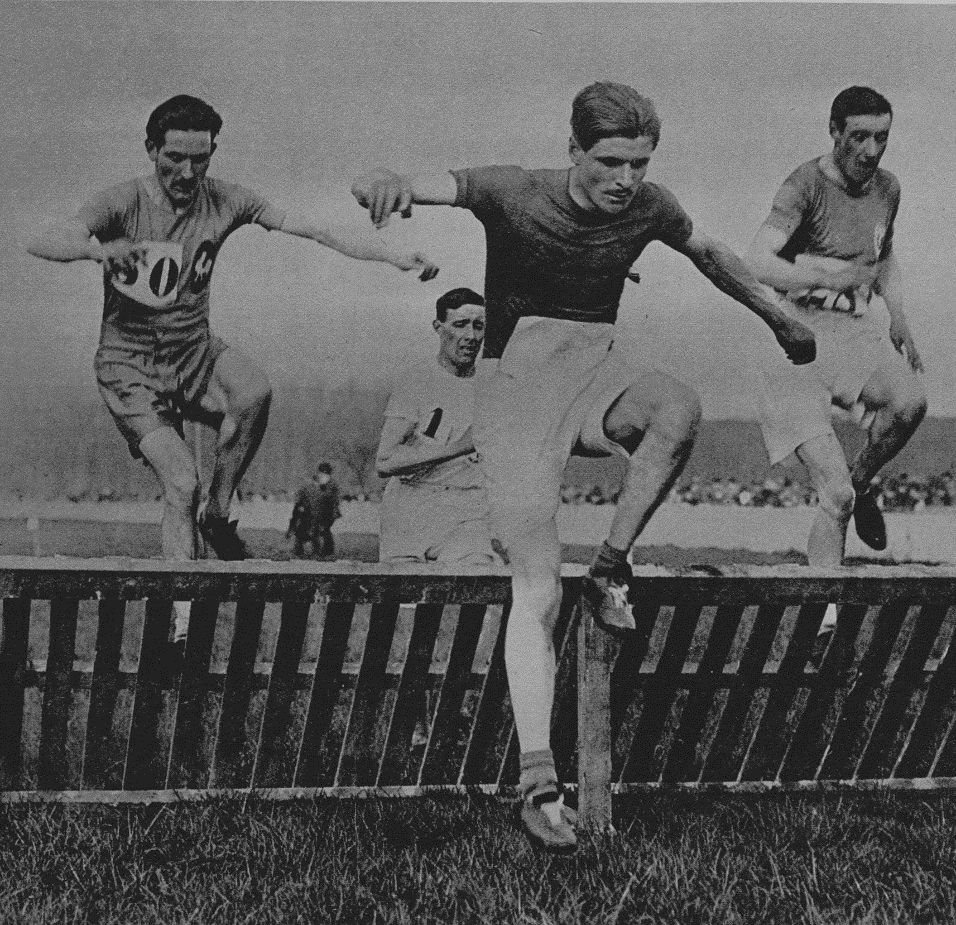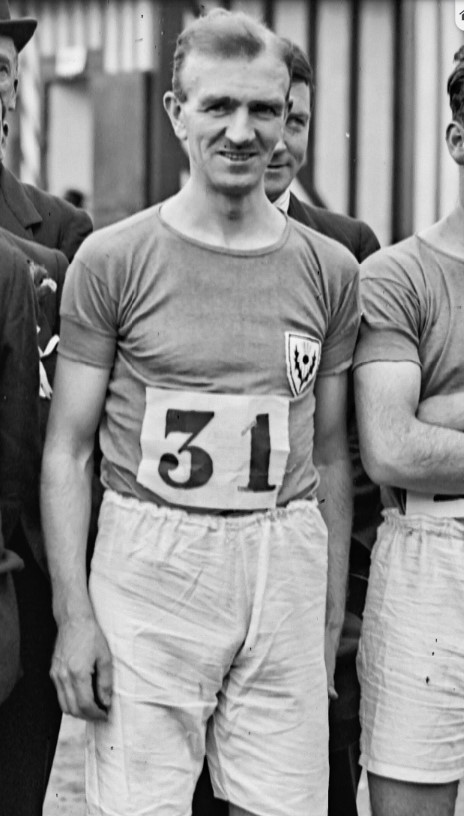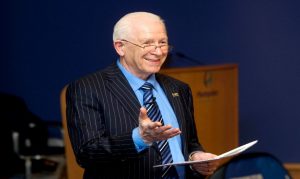
Scottish Athletics International Coaching Conference – Nov 05
Long Term Athletics Development
I have been asked to share with you an overview of my experience in the LTAD of Scottish World Class Athletes, Tom McKean, Yvonne Murray-Mooney and Susan Scott. The timescales involved were: –
Tommy Boyle Coaching Career – Club – World Class Athletics
1968-Present
Tom McKean
Phases I – IV Coached through all stages of development – recruitment – training to win at World Level
1974 – 1993
(age 10) (age 29)
Yvonne Murray-Mooney
Phases III – IV Coached last part of competition development – training to win at World Level
1987 – 1998
(age 23) (age 34)
Susan Scott
Phases III – IV Coached through competition development – Currently being coached – training to win at World Level
2001-Present
(age 28)
The results achieved in the development of these athletes were only possible due to combining the vast experience which I have gained over many years working with young athletes in the club situation and equipping myself with a balanced mix of coaching theory and practical experience much of which was gleaned from attending coach education courses in Scotland, learning from the experience of many top Scottish coaches and researching literature from the rest of the world.
Ultimately, however, to be successful in coaching athletics, the coach must have the inner desire to be the very best.
I will use the experience gained with Tommy McKean to outline a successful example of LTAD from recruitment to World Class.
Clearly, I cannot go into great detail in the time allocated for today’s lecture. However, I shall try to give you an overview of the key elements in the development process and include a more detailed summary in your hand out lecture:-
Fundamental Coaching Principles
Each coach gradually develops their own ideas on what is important. Thankfully, athletes are still individuals and, as such, require varying approaches to achieve their optimum level of performance. There is no one way in coaching but some things are more essential than others in the development of the athlete.
The important thing for the coach is that you take a sound knowledge of current training theory, mix it together with practical work in the field and gradually improve the blend as you gain in experience and are able to adopt a more critical assessment as to the effectiveness of your training programmes. A few of the key points which I feel are important in the overall development process are:-
• Training must be enjoyable – first measure of a successful coach – do the kids come back to training?
• The variety of training is restricted only by the limits of one’s imagination;
• Ensure a sound base of general conditioning is established and that it is progressive – absolutely fundamental in today’s society;
• Do not specialise too soon – let the young athletes sample the full spectrum of athletics events – multi-sided approach;
• Gradually install the discipline of training;
• Excessive loads for prolonged periods have a negative effect on the future development of the young athlete;
• High mileage/one-paced running must be avoided;
• Basic running technique must be taught early and improved in parallel with the physical development of the athlete;
• Life must be kept as simple as possible until the athlete has emerged through the myriad of problems which surround the pubertal growth spurs and adolescent revolutions;
• Prepare to meet the enormous challenges when the athlete stops progressing through natural growth and becomes totally dependent on the stimulus of training for improved performance;
• Know why you are doing each session what effect you are going to get and be ruthless in the evaluation of the effect;
• Scrutinise the requirements of the events and the projected progressions – what time must an athlete do for 200/800?
• Be objective in the assessment of the athlete’s potential to meet those requirements;
• Do not compromise on your principles – no matter how good the athlete;
• Pursuit of excellence is not only for the athlete – it is every bit as important that the coach has the desire to improve and is not afraid to venture into the upper echelons of the sport. I want to be World Class!
• There are no magic solutions, however, through the application of sound principles, combined with a common sense approach, an abundance of patience, enthusiasm and a lot of hard work, one can ensure that both coach and athlete produce their very best.
• If the coach has ambition and provided the athlete has 100% confidence in the coach then the athlete gradually gains 100% confidence in their training (the key to success at World Class);
• Finally, my experience working with World Class athletes in Scotland is that you must leave no stone unturned in the pursuit of excellence – you must be prepared to take risks – be totally aware that you will be a big fish in a small pond and when the inevitable poor performances occur you will be criticised totally out of context of the performance – you and your athlete will be given a wide berth by your athletics colleagues and officials. You must have faith – support your athlete 100% – go where the critics fear to tread – rebuild the athlete’s confidence – both live your dream – it can be done by Scottish Athletes and coaches !
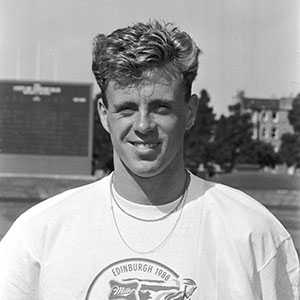 Tom McKean – Phases of Development Process
Tom McKean – Phases of Development Process
Phase I – Introduction to Athletics (11-16) – (Base of the Pyramid)
Tommy was like many youngsters attracted to athletics by establishing a role model via media coverage of major championships – being encouraged to participate in school cross country – by an enthusiastic head teacher and actually enjoying the amazing feeling of being good at the sport of athletics – he was recruited to the local club, Bellshill YMCA – where the foundation for LTAD was laid – the basic principles being:-
• Multi-sided approach – fun and games training;
• Solid aerobic foundation through team games, cross-country;
• Basic disciplines instilled in the individuals/teams;
• Coaching pass through system utilised U11, 11-13, 11-15, 15-16;
• Group session games – aerobic running – running round the streets;
• School – competition given priority;
• Competition emphasis – Teams – Inter-Club – County – Inter-County– National Schools – British Schools and Age Group Internationals;
• Tommy was good at cross country and showed his first real spark when in 6 inches of snow at the National Cross Country he came up from 60th to 3rd in the last 800 metres – he had that desire to win!
• He was just one of many good young athletes who formed the recruitment base of Club Athletics. He was not the best in that age group, but most importantly he enjoyed the variety of training and was given a very broad base of the conditioning foundation for future development!!
Phase II – 17
Cross country was still used as conditioning but circuit training was now of increasing importance as the emphasis was swinging more emphatically towards sprinting. Stricter disciplines were learned through training with older age groups and working towards targets was encouraged, motivation ensured via team competitions but now in sprint relays and 400 metres whilst still competing at all distances through to 1500 metres.
Phase II – Junior Man – 17-19
Cross country is now seen only as conditioning with races as fitness tests or fun with the boys. Weights were introduced in the circuit format with the major training objective being the development of sprinting ability and refinement of technique – aiming to significantly improve 200/400 metre times which would be the limiting factor in subsequent specialisation at 800 metres if we recognise where the event was going with Sebastian Coe’s world record 1m41.73.
Success as a second year junior indicated that Tommy was now responding very well to the stimuli of specific training for sprinting whilst still retaining through conditioning work the ability to race at 800 metres. Fundamental to future development!!
Phase II – First Year Senior 19-20
The plan was to reduce his 200/400 metre times but with a shift in emphasis via the introduction of structured track training for 800 metres. However, disaster struck when we increased intensity too quickly during the transition in track training: result – shin problems which, combined with a typical cavalier approach by a 19 year old, we had a bad injury which almost finished his athletics career through the sheer frustration of having trained hard all winter only to miss the full track season. Fortunately, Tom Craig (his physio at that time) did an excellent job – gave Tommy one race where he finished second in the Scottish 800m Championship. This kept him in the sport, but only just. The increased free time, meeting girls, loss of the training discipline, resulted in the gradual realisation that he was not going to fulfil the promise which the previous year’s performances were suggesting he was capable. I had a head on collision with Tommy where the hard facts were laid on the table: either 100% or nothing, and for some three months, he messed about before eventually recognising that he was throwing away the very thing he was good at. As a coach, I learned much from the situation: you can be the best in the world with the most talented athlete but unless he wants success more than anything else – forgot it – you’re wasting your time! The other harsh fact which emerged was the reality of our sport in Scotland: here we had another talented athlete out for a year and no-one asked a single question why. It was a case of facing up to the facts and organising myself accordingly to ensure that I was suitably equipped to breach the chasms which existed in the athletics system.
Phase II – Second Year Senior 20
The first objective was to consolidate the pre-injury performance and then to begin the next phase of development which was to specialise in the 800 metres event. Tommy was gradually introduce to increased workloads, training plans, short and long term objectives and gradually the process of transferring greater responsibility to the athlete was underway. Major and minor objectives were established and achieved – confidence in the coaching and training increased through realisation of mutual goals – discussions were now common with valuable feedback flowing in both directions. The year was concluded by introducing Tommy to a four year plan, aimed at Edinburgh/Stuttgart and, as we were now half way through having successfully achieved all objectives, it served the dual purpose of establishing confidence and presenting even greater challenges.
Phase III – Third Year Senior 21
This was the crucial year where we planned meticulously for the break-through and transition to full UK international. The key steps were:
a. Breakthrough – win UK closed – easier in a low year
b. Get Time for Selection – Rather difficult if you cannot get races, therefore, we used an agent as this was the only way to get a race abroad unless you had a time!
c. Consolidate Selection – It was crucial to either win or be second.
d. Gain Experience at Back/Back – This was important for next year’s games. “Training on the track became more specific to the requirements of the event with many sessions involving competition specific and race simulation situations faster than race pace.
In parallel with the planning for on-track activities, it was essential that we maximise on the publicity and organise the off-track activities to ensure that Tommy could concentrate 100% on producing his best performances in the correct competitions. I ensured that the correct level of exposure was obtained from each success, a fine balance was maintained, sponsorship was negotiated and a job secured that would allow the correct mix of training – leisure – work – for progression in the next year.
The competition season went as planned with one exception – with Europa Cup selection and win was a bonus which unfortunately upset our plans to use Zurich – Berlin – Cologne as back-to-back situations.
The big question which I was now being asked was – “Is he a one-season wonder or do you really know what you are doing?” – We shall see!
Phase III – Fourth Year Senior 22
Careful analysis of the previous year’s situation clearly indicated that we had several flaws in our armoury. To reinforce these weak spots necessitated strengthening the support team. Fortunately, Tommy’s major sponsor, Glen Henderson, in addition to being a very successful motor dealer, was also a very knowledgeable sports enthusiast who specialised in speed skating and was able to advise which direction we should move if we were to continue to progress in the cut and thrust arena of World Class athletics. This was gradually achieved by the recruitment of the best help which we could find: every aspect was improved.
Training workloads were increased in line with the requirements of three-round championships. Physiological testing was commenced to monitor the effect of present and past training and to provide a more accurate guidance of future training. Physiotherapy was made more readily available and this, as Glen Henderson had predicted, proved to be a crucial factor when Tommy was injured in three separate occasions but was still able to complete “safely” and “successfully”.
The objectives were established – competition plans compiled in such a manner that the minimum of exposure would obtain the desired effect – recognising the degree of expectancy which would inevitably exist and gather momentum leading up to the Commonwealth Games. Experiments were conducted in minor races, previous personal bests achieved but, importantly not surpassed, offers to run in major races were politely refused, the opposition and their ploys totally ignored as we became engrossed in the seemingly impossible task of getting Tommy through the injuries in the correct mental attitude. This was done and the final preparation for Edinburgh checked and re-checked by Stuart Hogg, long time friend and senior sprints coach. Nothing was left to chance in our quest for competitive advantage for the athlete – result: 2nd position – 1m44.80, new Scottish National/Native Record.
The next task was to overcome the vacuum created by the post Games anti-climax. This proved to be an ever bigger problem than I had thought it would be and this is where the team approach really “proved its weight in silver”. Our solution to the problem was a total change in environment – training partners – coach – and probably most important to escape family pressures – a very high risk some might say but we prefer to think that the final week’s preparation in Glenrothes was a sensible response to a very difficult situation – result: Coe 1st, McLean 2nd, Cram 3rd – new Scottish Record – new PB.
Phase III
The final year of the fourth year plan was focused totally on preparation for the Olympic Games; the training year was carefully planned with the emphasis on ensuring Tommy had enough high level competitions to give him the confidence which would help him overcome the mental scar of 1987. Unfortunately, a training overload error, coupled with a frosty morning on the grass at Strathclyde Park, resulted in an achilles tendon injury – 6 weeks out of running.
Thankfully, by this time we had a World Class back-up team and collectively Dave McLean, Prof. Myra Nimmo and myself combined every last grain of experience we had to develop a training program which would ensure Tommy was physically conditioned to the highest possible level utilising circuits/weights/aqua area/jogging. We developed our own regime of training and experimented with effort/recovery until we simulated as near as possible what was required – ultimately succeeding in that vital minefield where most athletes fail the transition to running load intensity increase.
By the end of June Tommy was competing at World Class level and arguably had one of his most successful seasons at GB level tipping the world rankings and winning the GP final.
This was not translated into Olympic results primarily due to an off track issue which resulted in a front page exposure in the Sun Newspaper on the day the team left for the Olympics.
Consequences – mind blown – lost his focus in the 2nd round – pushed an athlete – qualified for the semi but was subsequently disqualified when I believe he was in the condition of his life and would have won a medal for Britain.
– Disaster recovery programme implemented – !
Phase IV
The next five years were dedicated to the task of developing Tommy’s ability to win at World Level. During this five year period, he ran 10 of his best times:-
1989
• Increase in exposure to Grand Prix Competition
• Taking on the best in the world week after week
• Front running the Scottish Championships and new Native Record 1:44.79
• Chasing and beating Paul Erang (Olympic Champion) unbeaten over 20 races in one of the best races of his career (1:43.9 – Scottish National Record at Crystal Palace)
• Winning Grand Prix Final
• Finishing Top world rank at 800m
1990
• Commonwealth Games in Auckland – insufficient comps
• AAA Indoor gold
• European Indoor Gold
• Increasing number of major wins
• Climax in superb win front running the European champs in split
1991
• Fourth European Cup Win
• Major wins in Europe
• Minor mistake – major impact eliminated in heat of World Champs finishing 2nd to Mark Everett, a World Class 400m runner
1992
• Re-established confidence and regaining winning ways
• Major wins in Grand Prix
• Qualified for Olympics – ran bad race
1993
• Won AAA Indoor
• Won World Indoor Gold
• End of coach/athlete partnership
Age
Year / Date PB Event Psn Time
200 800
Phase IV 29 ‘93 World Indoor Gold 1st 1:47.29
28 ‘92 GP Final (Bronze) 3rd 1:46.06
1:44.39 Cologne GP 3rd 1:44.39
27 ‘91 1:44.20 Malmo GP 2nd 1:44.20
Stockholm GP 1st 1:44.41
Europa Cup (Gold) 1st 1:45.60
26 ‘90 1:44.76 European Champs (Gold) 1st 1:44.76
Example of a Competition Year 14/9/90 Sheffield 1st 1:46.50
9/9/90 Rietie 2nd
29/8/90 Peak Split 1st 1:44.70
17/8/05 Gateshead 1st 1:45.50
7/8/05 Malmo 1st 1:45.30
4/8/90 1:44.44 AAAs – Trials 2nd 1:44.44
20/7/90 Crystal Palace 4th 1:45.15
12/7/90 Lausanne 1st 1:45.67
6/7/90 Edinburgh 1st 1:44.96
2/7/90 Stockholm 2nd 1:45.75
29/6/90 GB v GDR v Canada 1st 1:46.98
1/90 C Games Auckland
2/90 UK
2/90 AAAs Birmingham 1st 1:46.90
3/90 European Indoor Champ (Gold) 1st 1:46.22
25 ‘89 World Cup (Kiproketch) (Gold) 1st 1:44.95
Zurich Champs 5th 1:44.20
Scottish Native Crown Point (Gold) 1st 1:44.79
Scot. Nat. Record 1:43.88 London GP – “Erang” 1st 1:43.88
European Cup (Gold) 1st 1:46.94
Phase III 24 ‘88 Olympic Games H2 Disq. Personal Issues
GP Final 1st 1:47.60
1st 800 IAAF Ranking
23 ‘87 1:44.45 World Champ Final 8th Media Expectation
Europa Cup (Gold) 1st 1:45.96
Luagana GP – “Konchela” 1st 1:44.45
22 ‘86 1:44.61 European Champ (Silver) 2nd 1:44.61
1:44.80 Commonwealth (Silver) 2nd 1:44.80
21 ‘85 21.60 1:46.05 Budapest GP 2nd 1:46.05
Europa Cup (Gold) 1st 1:49.11
UK Champs (Gold) 1st 1:49.12
Phase II 20 ‘84 22.38 1:48.04 Scot Cat. 1st Scottish International
19 ‘83 22.40 1:49.80 Scottish Champs 2nd 1:49.18
Injured – shins
18 ‘82 22.80 1:49.30 Scottish Champs 400 1st 1:49.30
8 Nations 1st Exposure
17 ‘81 22.90 1:52.60 W. Dist. 800 1st
Scottish Junior 400 1st
Phase I 16 ‘80 23.50 1:54.10 British School 800 1st
W. Dist. 200 1st
15 ‘79 24.00 1:59.70 British School Cross Country 16th
14 ‘78 24.50 2:08.00 Scottish School Cross Country 4th
13 ‘77 25.70 – School and Club Competition
 Yvonne Murray-Mooney – Phase III – 1987/1988
Yvonne Murray-Mooney – Phase III – 1987/1988
I started coaching Yvonne in late 1987. She had by that time been successful in reaching international level with many age groups and best times to her credit – she now wanted to win at World Class Level.
The challenge was to take the vast reservoir of coaching knowledge, the support of the back up team already in place and to quickly conduct a total assessment.
• The requirement of the event at World Class Level;
• The training required to meet those requirements;
• The current status of the athlete relative to the requirement.
This was completed over the first few months and a clear set of objectives put in place to ensure that Yvonne was both physically and mentally prepared for the Olympics in Seoul, a gigantic task given the added challenge of location and climate. The main elements of the change process included:-
• Implementation of the professional support developed for T McKean;
• Total review of lifestyle balance;
• Establishment of supporting sponsorship – job/car/finance;
• Total review of training load/intensity;
• Commence the learning process coach/athlete/support team.
What emerged was a much stronger athlete both physically and mentally prepared and more confident entering the competition season – result Bronze Medal in Seoul. A fantastic team effort in the process of developing world competitive performance – and peaking at the correct time.
1989 – The final Year in Learning to Compete
This year consisted of consolidation of the training regime which we had implemented.
• Increasing load – reducing recovery/increasing intensity
• Improving every aspect of technique – circuits/weights/running
• Construction of a competition programme which allowed experimentation in the manner Yvonne would win her races
• Lifestyle balance was again improved with every aspect scrutinised and corrective actions implemented
• Learning to change pace – kick from various distances
During the complete season I spent three weeks on the European circuit with Tom and Yvonne learning how they coped with the situations and each other this was to prove a very valuable experience in preparing for the Europeans in 1990 – result was an extremely successful competition season with many fine performers – experimenting in every race – and finishing in winning the Grand Prix final in Barcelona.
Grand Prix Final Kick 200 (Gold) – 9:02.59 3k
World Cup Final Kick 800 (Gold) – 8:44.34 3k
First British Winner of Women’s Track Event at World Cup Final.
1990 – Phase IV – Winning at World Class Level
The objective was to develop a double periodised competition plan aimed at preparing an athlete to compete in the Commonwealth Games in Auckland, New Zealand in January with a second competition phase aimed at winning the European 3k in split Yugoslavia in August.
The challenge was immense, and included:-
• Further refinement of all training loads;
• Meticulous planning of double periodised year;
• Travel – accommodation – medical – physio – communication;
• Pre-Games Australia Games Auckland
• Coach support in Auckland – T Boyle/S Hogg;
• Competition opportunity – 1 Comp – Result Silver 3000;
• Transition back into volume training in Scotland.
The main objective that year was to prepare for European Champs split. This consisted of:-
• Meticulous planning of load intensity;
• Thorough evaluation of competition;
• Competition season designed to create picture in opposition mind;
• Final preparation – in warm up area – knowing Tom McKean had just won Gold !
Result – Gold Medal 3k Kick from 550
1991
Yvonne was very keen to give altitude a try. This was World Champs. Year and we decided that it would be best to use this year – we planned carefully with time spent in Johannesburg then Capetown and back to Johannesburg before returning to Scotland – it was not a success the variables were too many and we certainly learned the greatest issue was Yvonne training on her own. I was shocked when I arrived in Capetown to see how much she had lost v. plan and was obviously aware that this was not right so yet again coaching recovery plan – rebuild, reassure, realign – we got things back on track but the experiment did not work.
The main competition season:-
• Major mistake in Europa Cup, Frankfurt when we decided to experiment with Yvonne going after one lap. She went too fast on that first two laps and really suffered. As a consequence, an experiment which backfired
• Quickly back on course with good victory at Meadowbank in 8:36.05;
• The Worlds went reasonably well but it was clear that the opposition were ready to pounce when Yvonne kicked – we knew that would be the case – result 4th.
Phase IV – 1992 – Objective – Olympics
• The year was focused at preparation for the Olympics
• Main competition season went well – most objectives achieved
• Major issue was trying to overcome the acclimatisation to heat
• Result Olympics – did not perform to capability in the conditions.
1993 – Objective World Indoor – Grand Prix – Success
• Warm weather/altitude in Arizona – M Ritchie
• World Indoor – Gold Montreal
• Excellent performance in GP throughout the year
• 2nd in Grand Prix Final
1994 – Objective – Commonwealth – 10k
• Transition to 10k training
• Scottish National Record in Oslo Mile 4:22.64
• Scottish/Uk Record in Edinburgh 2k 5:26.93
• Silver in European Champs 3k 8:36.48
• Gold in World Cup 3k 8:56.81
• Gold in Commonwealth Games 10k 31:56.7
Arguably, Yvonne’s highest level of performance in her career 5 1st places and 7 2nd places at World level. A fantastic year in what was effectively her final serious track season.
1995-1998 – Transition to Road
The next few years were spent in transition to road racing with varying degrees of success and failure, but never really consolidating a successful recipe.
End of coach/athlete partnership!
Summary of Achievements
Bronze Medal 1985 European Indoor Championships
Silver Medal 1986 European Indoor Championships
Bronze Medal 1986 Commonwealth Games at Edinburgh
Gold Medal 1987 European Indoor Championships
Bronze Medal 1988 Olympic Games at Seoul
Gold Medal 1989 World Cup at Barcelona
Silver Medal 1990 Commonwealth Games at Auckland
Gold Medal 1990 European Championships at Split
Gold Medal 1993 World Indoor Championships at Toronto
Silver Medal 1994 European Championships at Helsinki
Gold Medal 1994 Commonwealth Games at Victoria
Gold Medal 1994 World Cup at Crystal Palace
– Ranked Number Two in the World in 1994 for the Mile, 2000m and 3000m
– First British Female to win a Gold Medal in the World Indoor Championships
– First British Female to win an individual track Gold Medal in the World Cup
– First British Female athlete in 21 years to win a European Championship Gold Medal in a track event
– The Honour of MBE was bestowed upon Yvonne at Buckingham Palace on 12th March (New Year Honours List 1991)
Appendix III
Y Murray-Mooney –
Progression and Significant Achievements (including ex 1994 Comp Year)
Age Year / Date
1500m
3000m Other Major Event Psn
Training to Road 33 1998
32 1997
31 1996 1:12.25 Half Marathon
30 1995 53:3.50 10 Miles – Portsmouth
14:56.44 5 Miles – Crystal Palace (Scot. Nat. Record)
Phase IV 29 1994
Example of a Competition Year 11/9/04 8:56.81 Crystal Palace World Cup 3000m (Gold) 1st
4/9/04 5:38.0 Sheffield GP 2000m 2nd
24/8/04 31:56.97 Victoria Commonwealth 10k (Gold) 1st
10/8/04 8:36.48 Helsinki 3000m – Euro. Champs (Silver) 2nd
22/7/04 4:22.64 Oslo – Bislett 1 mile 2nd
20/7/04 4:04.18 Gateshead 1500m (Front Run) 1st
15/7/04 8:29.6 Crystal Palace 3000m (0.5 off PB) 2nd
8/7/04 5:26.93 Meadowbank Inv. 2000m (Scottish Nat Record) 2nd
12/6/04 4:01.44 AAA 1500m (Silver) 2nd
22/5/04 15:23 Aberdeen S/CD R/Race 2nd
28 1993 8:41.59 GP Final 2nd
5:36.03 Sheffield GP 1st
8:32.43
Brussels GP 2nd
8:33.62 London GP 1st
8:30.70 Oslo GP 2nd
4:17.5 Europa Cup (Bronze) 3rd
15:20.01 SK Road Aberdeen 2nd
8:50.55 World Indoor Toronto (Gold) 1st
27 1992 Olympic Final Barcelona
5:35.38 London GP 1st
26 1991 World Champs, Tokyo 4th
8:36.05 Edinburgh GP 1st
25 1990 8:43.06 European Champs (Gold) 1st
16/9/90 5:35.53 Sheffield GP 1st
19/9/90 8:39.46 Commonwealth Games, Auckland (Silver) 2nd
Phase III 24 1989 9:02.58 GP Final (3rd World) 1st
8:44.34 World Cup Barcelona (Gold) 1st
31/8/89 4:03.13 Brussels GP 3rd
7/8/89 4:03.58 Edinburgh GP 3rd
European Cup (Silver) 2nd
23 1988 8:29.02 Olympic/Scot. Nat. Record (Bronze) 3rd
10/7/88 8:37.22 Nice GP 1st
22 1987 4:01.20 8:48.15 Europa Cup (Silver) 2nd
21 1986 4:11.20 8:55.32 Commonwealth Games Edinburgh (Bronze) 3rd
20 1985 9:00.94
Appendix IV
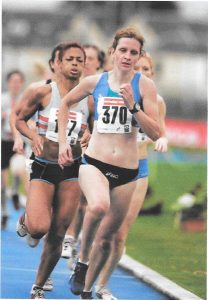
Susan Scott
I started coaching Susan at the end of 2001, at which time she had progressed through Phases I-II with her previous coaches and had achieved a good level of success at Scottish age group level with a clear bias towards 1500 and cross-country.
Phase III – Competition Development
The first objective was to conduct a total review of both her training and lifestyle and identify a more professional approach which would ensure she was being equipped to meet the requirements of the event and to give her the foundation from which she could over subsequent years achieve performance to the optimum of her capability. The areas included:-
• Use of pulse monitor to control effort in OBLA;
• Aerobic running at correct sub-OBLA pace;
• Structured circuit training – intensive/extensive;
• Performance of basic weight technique and structured programme;
• Inclusion of technique running/sprinting sessions;
• Introduction to pyramid concept for all training;
• Education on lifestyle balancing – recovery – nutrition;
• Total review of athlete’s ability v. event requirements.
The changes were significant. However, the training was successful and resulted in an improvement in every aspect of training performance which was subsequently translated into a major breakthrough winning Scottish, AAAs and finishing 4th in the Commonwealth Games with a time of 1:59.30. The first Scot to break 2 mins !
2003
This year was totally focused on teaching Susan how to race at World Class level in 800m and refining the training regime ensuring consolidation of the multi-sided approach. The major points of focus were:-
• Training loads increased – recover cut – intensity increase;
• Lifestyle balance improved – more recovery;
• Financial support – reviewed – major issues identified not resolved!!
• Race programme – learning to peak;
• Competition exposure – International/Europa Cup/Grand Prix;
• Susan did exceptionally well but had much to learn about the art of running 800m at World Class Level!
2004
The objective was simple – gain Olympic qualification
• Training refined, loads increased to meet requirement of event;
• Year plan developed – training – all objectives met;
• Competition Plan – MAJOR PROBLEM AREA;
• Funding reviewed – Inadequate to allow full-time training (3 day week)
In summary, the result was that Susan (despite being in tremendous physical condition) spent most of her competition season trying to consolidate a competition programme which would ensure the correct level of exposure at the appropriate time to provide the requisite number of opportunities to obtain qualification – she narrowly failed to do so.
Indeed, athletics failed Susan Scott.
2005 – Phase IV – Learning to Win at World Level
The first part of the winter was spent conducting a total review of the support and competition requirements with Aileen McGillivary, High Performance Athletics Manager, SIS. Major issues and improvements identified were:-
• Improvement in communication loops/timeframe SIS/coach/athlete/support team;
• Refinement of Sports Science –support including
o Field testing of OBLA/track reps/blood test/nutrition/physio
• Securing a Race Agent to provide the requisite level of competitions;
• Review of funding – still a major issue;
• Competition objective simple qualification/CG/800/1500 win AAA
• Training – Emphasis changed to include 1500m.
In summary, 2005 was a successful year for Susan, the key highlights being:-
• Recovering from tremendous disappointment of failing to qualify for OG;
• Successful adaptation to increase workload for 1500m;
• Improved competition plan – agent support;
• Qualification times for 1500m and 800m achieved;
• Winner of AAAs in tactical race;
• Bonus – qualification for Worlds;
• Experience gained in Heats/S Final
• Raw sessions best in World Championships.
In conclusion, the remainder of Phase IV will be invested in refinement of the total preparation of Susan to provide her with the maximum opportunity to achieve her dream in athletics.
My advice to Scottish Coaches is:-
• Decide what you want to do in your coaching career;
• How much time can you give up and still maintain a quality balance to your life?
• The time taken to travel the full athletics development pathway is fairly significant and will probably require in the pass through system being fundamental to future success;
• For me, every coach in the conveyor of success must be part of the team. If a pass through system is to be ultimately successful in long term athletics development;
• Enjoy your coaching !!
Appendix V
S Scott –
Progression and Significant Achievements (including ex 2003-2005 Comp Years)
Age Year / Date PB 800 Major Event Psn Time
Phase IV 32 2010 C Comm. Games/European Champs
31 2009 World Champs
30 2008 Olympic Games
29 2007 World Champs
28 2006 Comm. Games/European Champs
27 2005
Example of a Competition Year 21/8/05 Norwich Union Super GP 2nd 2:03.77
14/8/05 Scottish Champs (Gold) 1st 2:02.85
7/8/05 2:01.17 IAAF World Champs (Season Best) 8th 2:01.17
22/7/05 Norwich Union Super GP 3rd 2:02.06
10/7/05 AAA Champs & Trials (World & Comm)
(Gold) 1st 2:02.97
27/6/05 Josef Odlozil Memorial GPII (1500m) 2nd 4:14.84
12/6/05 Lille GP (1500m) 6th 4:09.10
Phase III 26 2004
Example of a Competition Year 15/8/04 Scottish Champs (Gold) 1st 2:02.85
14/8/04 Scottish Champs (Gold) 1st 4:17.0
30/7/04 2:00.71 Crystal Palace GP 4th 2:00.71
24/7/04 GB Match 6th 2:03.00
17/7/04 BMC 1st 2:01.70
14/7/04 Lahiti Games 1st 2:01.46
11/7/04 AAAs (Bronze) 3rd 2:02.13
27/6/04 Gateshead GP 6th 2:01.40
19/6/04 Euro. Cup (Bronze) 3rd 2:01.35
12/6/04 BMC 1st 2:00.77
2/6/04 Open Graded 2:01.87 mx
22/5/04 BMC 2nd 4:10.56
25 2003
Example of a Competition Year 1/8/03 North Down Games (Silver) 2nd 2:03.9
26/7/03 AAAs (Silver) 2nd 2:04.13
29/6/03 GB v. USA v. Russia 6th 2:03.16
21/6/03 Euro. Cup 6th 2:04.28
12/6/03 Ostrava GP 5th 2:01.85
1/6/03 2:01.08 Hengelo GP 2nd 2:01.08
GB Int. 5th 2:03
Scottish (Gold) 1st 2:02
24 2002 1:59.30 Commonwealth Games Scot. Nat. Record 4th 1:59.30
AAAs (Gold) 1st 2:03.84
23 2001 Scottish (Gold) 1st 2:06
European U23 Champs (1500m) (heat)
Phase II 22 1999 AAAs U23 (1500m) (Gold) 1st
20 1998 Scottish Champs 800m (Gold) 1st
19 1996 Scottish Champs (1500m) 3rd John Montgomery
Scottish Schools CC 2nd
Scottish CC Champs (Gold) 1st
British Schools Indoors (Gold) 1st
Phase I 15 1992 Scottish 800m Champ U15 (Gold) 1st Graham Greenham
14 1991 British Schools CC West District Champ
13 1990 Scottish CC Champ (Gold) 1st Glen Harrow
11 1988 Scottish CC Champ (Gold) 1st
Appendix VI
• End of coach/athlete partnership
Age
Year / Date PB Event Psn Time
200 800
Phase IV 29 ‘93 World Indoor Gold 1st 1:47.29
28 ‘92 GP Final (Bronze) 3rd 1:46.06
1:44.39 Cologne GP 3rd 1:44.39
27 ‘91 1:44.20 Malmo GP 2nd 1:44.20
Stockholm GP 1st 1:44.41
Europa Cup (Gold) 1st 1:45.60
26 ‘90 1:44.76 European Champs (Gold) 1st 1:44.76
Example of a Competition Year 14/9/90 Sheffield 1st 1:46.50
9/9/90 Rietie 2nd
29/8/90 Peak Split 1st 1:44.70
17/8/05 Gateshead 1st 1:45.50
7/8/05 Malmo 1st 1:45.30
4/8/90 1:44.44 AAAs – Trials 2nd 1:44.44
20/7/90 Crystal Palace 4th 1:45.15
12/7/90 Lausanne 1st 1:45.67
6/7/90 Edinburgh 1st 1:44.96
2/7/90 Stockholm 2nd 1:45.75
29/6/90 GB v GDR v Canada 1st 1:46.98
1/90 C Games Auckland
2/90 UK
2/90 AAAs Birmingham 1st 1:46.90
3/90 European Indoor Champ (Gold) 1st 1:46.22
25 ‘89 World Cup (Kiproketch) (Gold) 1st 1:44.95
Zurich Champs 5th 1:44.20
Scottish Native Crown Point (Gold) 1st 1:44.79
Scot. Nat. Record 1:43.88 London GP – “Erang” 1st 1:43.88
European Cup (Gold) 1st 1:46.94
Phase III 24 ‘88 Olympic Games H2 Disq. Personal Issues
GP Final 1st 1:47.60
1st 800 IAAF Ranking
23 ‘87 1:44.45 World Champ Final 8th Media Expectation
Europa Cup (Gold) 1st 1:45.96
Luagana GP – “Konchela” 1st 1:44.45
22 ‘86 1:44.61 European Champ (Silver) 2nd 1:44.61
1:44.80 Commonwealth (Silver) 2nd 1:44.80
21 ‘85 21.60 1:46.05 Budapest GP 2nd 1:46.05
Europa Cup (Gold) 1st 1:49.11
UK Champs (Gold) 1st 1:49.12
Phase II 20 ‘84 22.38 1:48.04 Scot Cat. 1st Scottish International
19 ‘83 22.40 1:49.80 Scottish Champs 2nd 1:49.18
Injured – shins
18 ‘82 22.80 1:49.30 Scottish Champs 400 1st 1:49.30
8 Nations 1st Exposure
17 ‘81 22.90 1:52.60 W. Dist. 800 1st
Scottish Junior 400 1st
Phase I 16 ‘80 23.50 1:54.10 British School 800 1st
W. Dist. 200 1st
15 ‘79 24.00 1:59.70 British School Cross Country 16th
14 ‘78 24.50 2:08.00 Scottish School Cross Country 4th
13 ‘77 25.70 – School and Club Competition
Yvonne Murray-Mooney – Phase III – 1987/1988
I started coaching Yvonne in late 1987. She had by that time been successful in reaching international level with many age groups and best times to her credit – she now wanted to win at World Class Level.
The challenge was to take the vast reservoir of coaching knowledge, the support of the back up team already in place and to quickly conduct a total assessment.
• The requirement of the event at World Class Level;
• The training required to meet those requirements;
• The current status of the athlete relative to the requirement.
This was completed over the first few months and a clear set of objectives put in place to ensure that Yvonne was both physically and mentally prepared for the Olympics in Seoul, a gigantic task given the added challenge of location and climate. The main elements of the change process included:-
• Implementation of the professional support developed for T McKean;
• Total review of lifestyle balance;
• Establishment of supporting sponsorship – job/car/finance;
• Total review of training load/intensity;
• Commence the learning process coach/athlete/support team.
What emerged was a much stronger athlete both physically and mentally prepared and more confident entering the competition season – result Bronze Medal in Seoul. A fantastic team effort in the process of developing world competitive performance – and peaking at the correct time.
1989 – The final Year in Learning to Compete
This year consisted of consolidation of the training regime which we had implemented.
• Increasing load – reducing recovery/increasing intensity
• Improving every aspect of technique – circuits/weights/running
• Construction of a competition programme which allowed experimentation in the manner Yvonne would win her races
• Lifestyle balance was again improved with every aspect scrutinised and corrective actions implemented
• Learning to change pace – kick from various distances
During the complete season I spent three weeks on the European circuit with Tom and Yvonne learning how they coped with the situations and each other this was to prove a very valuable experience in preparing for the Europeans in 1990 – result was an extremely successful competition season with many fine performers – experimenting in every race – and finishing in winning the Grand Prix final in Barcelona.
Grand Prix Final Kick 200 (Gold) – 9:02.59 3k
World Cup Final Kick 800 (Gold) – 8:44.34 3k
First British Winner of Women’s Track Event at World Cup Final.
1990 – Phase IV – Winning at World Class Level
The objective was to develop a double periodised competition plan aimed at preparing an athlete to compete in the Commonwealth Games in Auckland, New Zealand in January with a second competition phase aimed at winning the European 3k in split Yugoslavia in August.
The challenge was immense, and included:-
• Further refinement of all training loads;
• Meticulous planning of double periodised year;
• Travel – accommodation – medical – physio – communication;
• Pre-Games Australia Games Auckland
• Coach support in Auckland – T Boyle/S Hogg;
• Competition opportunity – 1 Comp – Result Silver 3000;
• Transition back into volume training in Scotland.
The main objective that year was to prepare for European Champs split. This consisted of:-
• Meticulous planning of load intensity;
• Thorough evaluation of competition;
• Competition season designed to create picture in opposition mind;
• Final preparation – in warm up area – knowing Tom McKean had just won Gold !
Result – Gold Medal 3k Kick from 550
1991
Yvonne was very keen to give altitude a try. This was World Champs. Year and we decided that it would be best to use this year – we planned carefully with time spent in Johannesburg then Capetown and back to Johannesburg before returning to Scotland – it was not a success the variables were too many and we certainly learned the greatest issue was Yvonne training on her own. I was shocked when I arrived in Capetown to see how much she had lost v. plan and was obviously aware that this was not right so yet again coaching recovery plan – rebuild, reassure, realign – we got things back on track but the experiment did not work.
The main competition season:-
• Major mistake in Europa Cup, Frankfurt when we decided to experiment with Yvonne going after one lap. She went too fast on that first two laps and really suffered. As a consequence, an experiment which backfired
• Quickly back on course with good victory at Meadowbank in 8:36.05;
• The Worlds went reasonably well but it was clear that the opposition were ready to pounce when Yvonne kicked – we knew that would be the case – result 4th.
Phase IV – 1992 – Objective – Olympics
• The year was focused at preparation for the Olympics
• Main competition season went well – most objectives achieved
• Major issue was trying to overcome the acclimatisation to heat
• Result Olympics – did not perform to capability in the conditions.
1993 – Objective World Indoor – Grand Prix – Success
• Warm weather/altitude in Arizona – M Ritchie
• World Indoor – Gold Montreal
• Excellent performance in GP throughout the year
• 2nd in Grand Prix Final
1994 – Objective – Commonwealth – 10k
• Transition to 10k training
• Scottish National Record in Oslo Mile 4:22.64
• Scottish/Uk Record in Edinburgh 2k 5:26.93
• Silver in European Champs 3k 8:36.48
• Gold in World Cup 3k 8:56.81
• Gold in Commonwealth Games 10k 31:56.7
Arguably, Yvonne’s highest level of performance in her career 5 1st places and 7 2nd places at World level. A fantastic year in what was effectively her final serious track season.
1995-1998 – Transition to Road
The next few years were spent in transition to road racing with varying degrees of success and failure, but never really consolidating a successful recipe.
End of coach/athlete partnership!
Summary of Achievements
Bronze Medal 1985 European Indoor Championships
Silver Medal 1986 European Indoor Championships
Bronze Medal 1986 Commonwealth Games at Edinburgh
Gold Medal 1987 European Indoor Championships
Bronze Medal 1988 Olympic Games at Seoul
Gold Medal 1989 World Cup at Barcelona
Silver Medal 1990 Commonwealth Games at Auckland
Gold Medal 1990 European Championships at Split
Gold Medal 1993 World Indoor Championships at Toronto
Silver Medal 1994 European Championships at Helsinki
Gold Medal 1994 Commonwealth Games at Victoria
Gold Medal 1994 World Cup at Crystal Palace
– Ranked Number Two in the World in 1994 for the Mile, 2000m and 3000m
– First British Female to win a Gold Medal in the World Indoor Championships
– First British Female to win an individual track Gold Medal in the World Cup
– First British Female athlete in 21 years to win a European Championship Gold Medal in a track event
– The Honour of MBE was bestowed upon Yvonne at Buckingham Palace on 12th March (New Year Honours List 1991)
Appendix III
Y Murray-Mooney –
Progression and Significant Achievements (including ex 1994 Comp Year)
Age Year / Date
1500m
3000m Other Major Event Psn
Training to Road 33 1998
32 1997
31 1996 1:12.25 Half Marathon
30 1995 53:3.50 10 Miles – Portsmouth
14:56.44 5 Miles – Crystal Palace (Scot. Nat. Record)
Phase IV 29 1994
Example of a Competition Year 11/9/04 8:56.81 Crystal Palace World Cup 3000m (Gold) 1st
4/9/04 5:38.0 Sheffield GP 2000m 2nd
24/8/04 31:56.97 Victoria Commonwealth 10k (Gold) 1st
10/8/04 8:36.48 Helsinki 3000m – Euro. Champs (Silver) 2nd
22/7/04 4:22.64 Oslo – Bislett 1 mile 2nd
20/7/04 4:04.18 Gateshead 1500m (Front Run) 1st
15/7/04 8:29.6 Crystal Palace 3000m (0.5 off PB) 2nd
8/7/04 5:26.93 Meadowbank Inv. 2000m (Scottish Nat Record) 2nd
12/6/04 4:01.44 AAA 1500m (Silver) 2nd
22/5/04 15:23 Aberdeen S/CD R/Race 2nd
28 1993 8:41.59 GP Final 2nd
5:36.03 Sheffield GP 1st
8:32.43
Brussels GP 2nd
8:33.62 London GP 1st
8:30.70 Oslo GP 2nd
4:17.5 Europa Cup (Bronze) 3rd
15:20.01 SK Road Aberdeen 2nd
8:50.55 World Indoor Toronto (Gold) 1st
27 1992 Olympic Final Barcelona
5:35.38 London GP 1st
26 1991 World Champs, Tokyo 4th
8:36.05 Edinburgh GP 1st
25 1990 8:43.06 European Champs (Gold) 1st
16/9/90 5:35.53 Sheffield GP 1st
19/9/90 8:39.46 Commonwealth Games, Auckland (Silver) 2nd
Phase III 24 1989 9:02.58 GP Final (3rd World) 1st
8:44.34 World Cup Barcelona (Gold) 1st
31/8/89 4:03.13 Brussels GP 3rd
7/8/89 4:03.58 Edinburgh GP 3rd
European Cup (Silver) 2nd
23 1988 8:29.02 Olympic/Scot. Nat. Record (Bronze) 3rd
10/7/88 8:37.22 Nice GP 1st
22 1987 4:01.20 8:48.15 Europa Cup (Silver) 2nd
21 1986 4:11.20 8:55.32 Commonwealth Games Edinburgh (Bronze) 3rd
20 1985 9:00.94
Appendix IV
Susan Scott
I started coaching Susan at the end of 2001, at which time she had progressed through Phases I-II with her previous coaches and had achieved a good level of success at Scottish age group level with a clear bias towards 1500 and cross-country.
Phase III – Competition Development
The first objective was to conduct a total review of both her training and lifestyle and identify a more professional approach which would ensure she was being equipped to meet the requirements of the event and to give her the foundation from which she could over subsequent years achieve performance to the optimum of her capability. The areas included:-
• Use of pulse monitor to control effort in OBLA;
• Aerobic running at correct sub-OBLA pace;
• Structured circuit training – intensive/extensive;
• Performance of basic weight technique and structured programme;
• Inclusion of technique running/sprinting sessions;
• Introduction to pyramid concept for all training;
• Education on lifestyle balancing – recovery – nutrition;
• Total review of athlete’s ability v. event requirements.
The changes were significant. However, the training was successful and resulted in an improvement in every aspect of training performance which was subsequently translated into a major breakthrough winning Scottish, AAAs and finishing 4th in the Commonwealth Games with a time of 1:59.30. The first Scot to break 2 mins !
2003
This year was totally focused on teaching Susan how to race at World Class level in 800m and refining the training regime ensuring consolidation of the multi-sided approach. The major points of focus were:-
• Training loads increased – recover cut – intensity increase;
• Lifestyle balance improved – more recovery;
• Financial support – reviewed – major issues identified not resolved!!
• Race programme – learning to peak;
• Competition exposure – International/Europa Cup/Grand Prix;
• Susan did exceptionally well but had much to learn about the art of running 800m at World Class Level!
2004
The objective was simple – gain Olympic qualification
• Training refined, loads increased to meet requirement of event;
• Year plan developed – training – all objectives met;
• Competition Plan – MAJOR PROBLEM AREA;
• Funding reviewed – Inadequate to allow full-time training (3 day week)
In summary, the result was that Susan (despite being in tremendous physical condition) spent most of her competition season trying to consolidate a competition programme which would ensure the correct level of exposure at the appropriate time to provide the requisite number of opportunities to obtain qualification – she narrowly failed to do so.
Indeed, athletics failed Susan Scott.
2005 – Phase IV – Learning to Win at World Level
The first part of the winter was spent conducting a total review of the support and competition requirements with Aileen McGillivary, High Performance Athletics Manager, SIS. Major issues and improvements identified were:-
• Improvement in communication loops/timeframe SIS/coach/athlete/support team;
• Refinement of Sports Science –support including
o Field testing of OBLA/track reps/blood test/nutrition/physio
• Securing a Race Agent to provide the requisite level of competitions;
• Review of funding – still a major issue;
• Competition objective simple qualification/CG/800/1500 win AAA
• Training – Emphasis changed to include 1500m.
In summary, 2005 was a successful year for Susan, the key highlights being:-
• Recovering from tremendous disappointment of failing to qualify for OG;
• Successful adaptation to increase workload for 1500m;
• Improved competition plan – agent support;
• Qualification times for 1500m and 800m achieved;
• Winner of AAAs in tactical race;
• Bonus – qualification for Worlds;
• Experience gained in Heats/S Final
• Raw sessions best in World Championships.
In conclusion, the remainder of Phase IV will be invested in refinement of the total preparation of Susan to provide her with the maximum opportunity to achieve her dream in athletics.
My advice to Scottish Coaches is:-
• Decide what you want to do in your coaching career;
• How much time can you give up and still maintain a quality balance to your life?
• The time taken to travel the full athletics development pathway is fairly significant and will probably require in the pass through system being fundamental to future success;
• For me, every coach in the conveyor of success must be part of the team. If a pass through system is to be ultimately successful in long term athletics development;
• Enjoy your coaching !!
Appendix V
S Scott –
Progression and Significant Achievements (including ex 2003-2005 Comp Years)
Age Year / Date PB 800 Major Event Psn Time
Phase IV 32 2010 C Comm. Games/European Champs
31 2009 World Champs
30 2008 Olympic Games
29 2007 World Champs
28 2006 Comm. Games/European Champs
27 2005
Example of a Competition Year 21/8/05 Norwich Union Super GP 2nd 2:03.77
14/8/05 Scottish Champs (Gold) 1st 2:02.85
7/8/05 2:01.17 IAAF World Champs (Season Best) 8th 2:01.17
22/7/05 Norwich Union Super GP 3rd 2:02.06
10/7/05 AAA Champs & Trials (World & Comm)
(Gold) 1st 2:02.97
27/6/05 Josef Odlozil Memorial GPII (1500m) 2nd 4:14.84
12/6/05 Lille GP (1500m) 6th 4:09.10
Phase III 26 2004
Example of a Competition Year 15/8/04 Scottish Champs (Gold) 1st 2:02.85
14/8/04 Scottish Champs (Gold) 1st 4:17.0
30/7/04 2:00.71 Crystal Palace GP 4th 2:00.71
24/7/04 GB Match 6th 2:03.00
17/7/04 BMC 1st 2:01.70
14/7/04 Lahiti Games 1st 2:01.46
11/7/04 AAAs (Bronze) 3rd 2:02.13
27/6/04 Gateshead GP 6th 2:01.40
19/6/04 Euro. Cup (Bronze) 3rd 2:01.35
12/6/04 BMC 1st 2:00.77
2/6/04 Open Graded 2:01.87 mx
22/5/04 BMC 2nd 4:10.56
25 2003
Example of a Competition Year 1/8/03 North Down Games (Silver) 2nd 2:03.9
26/7/03 AAAs (Silver) 2nd 2:04.13
29/6/03 GB v. USA v. Russia 6th 2:03.16
21/6/03 Euro. Cup 6th 2:04.28
12/6/03 Ostrava GP 5th 2:01.85
1/6/03 2:01.08 Hengelo GP 2nd 2:01.08
GB Int. 5th 2:03
Scottish (Gold) 1st 2:02
24 2002 1:59.30 Commonwealth Games Scot. Nat. Record 4th 1:59.30
AAAs (Gold) 1st 2:03.84
23 2001 Scottish (Gold) 1st 2:06
European U23 Champs (1500m) (heat)
Phase II 22 1999 AAAs U23 (1500m) (Gold) 1st
20 1998 Scottish Champs 800m (Gold) 1st
19 1996 Scottish Champs (1500m) 3rd John Montgomery
Scottish Schools CC 2nd
Scottish CC Champs (Gold) 1st
British Schools Indoors (Gold) 1st
Phase I 15 1992 Scottish 800m Champ U15 (Gold) 1st Graham Greenham
14 1991 British Schools CC West District Champ
13 1990 Scottish CC Champ (Gold) 1st Glen Harrow
11 1988 Scottish CC Champ (Gold) 1st
Appendix VI
